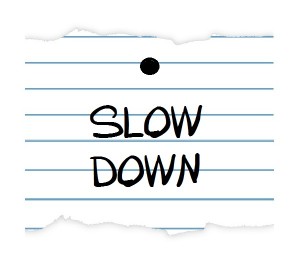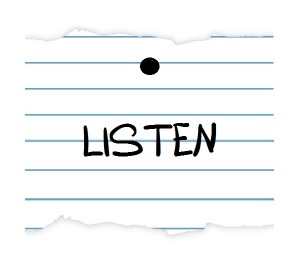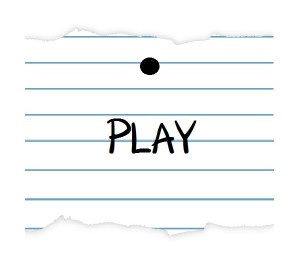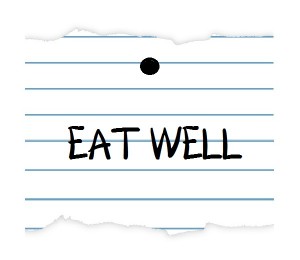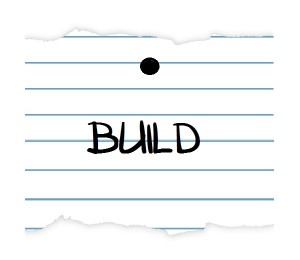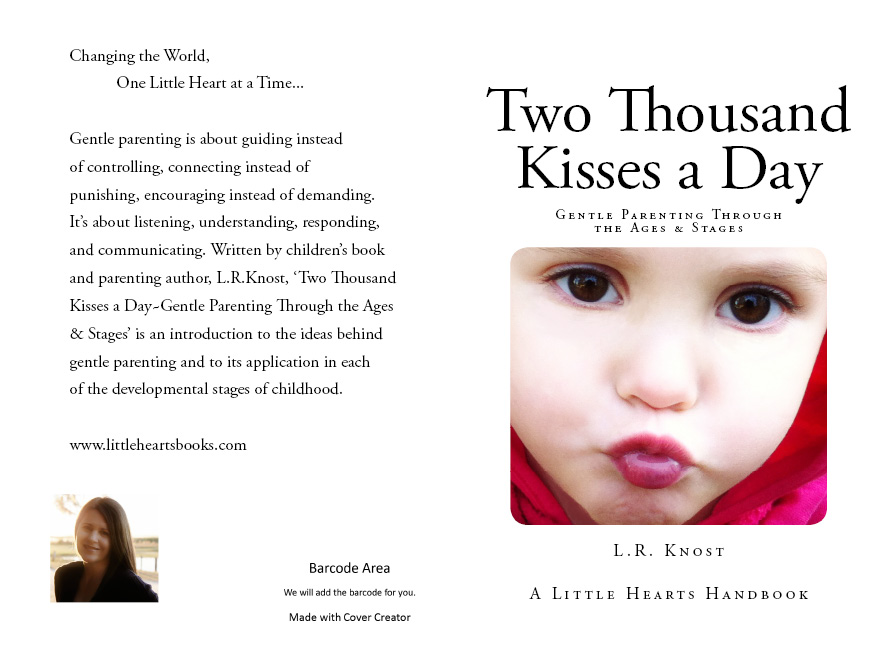When Things Get Physical: Hitting, Throwing, Kicking, and Biting
[Reprinted from The Gentle Parent: Positive, Practical, Effective Discipline by L.R.Knost. Whispers Through Time: Communication Through the Ages and Stages of Childhood and Two Thousand Kisses a Day: Gentle Parenting Through the Ages and Stages also available on Amazon and through other major retailers.]
~~~~~~~~~~~~~~~~~~~~~
 Toddlers and preschoolers are still in the early stages of learning to communicate verbally. Add to that the fact that they have little-to-no impulse control and very immature social skills, and you’ve got a recipe for an instinctive physical response (i.e. hitting, kicking, biting, hair pulling, throwing things, etc.) to situations when they are frustrated, angry, excited, scared, or just tired and out-of-sorts.
Toddlers and preschoolers are still in the early stages of learning to communicate verbally. Add to that the fact that they have little-to-no impulse control and very immature social skills, and you’ve got a recipe for an instinctive physical response (i.e. hitting, kicking, biting, hair pulling, throwing things, etc.) to situations when they are frustrated, angry, excited, scared, or just tired and out-of-sorts.
Many parents who practice gentle discipline wonder where their little one picked up the behavior, not realizing that it is a normal and age-appropriate reaction, albeit an undesirable one. Very often parents are advised to spank their child to train them not to hit others, especially those who are smaller and weaker than they are.
The concept of using consequences, physical or otherwise, as a deterrent for hitting is based on the misconception that small children have the capacity for forethought (i.e. “If I hit, I will get in trouble. Therefore I will not hit.”) and that they are choosing to disobey. As mentioned in the last chapter, though, the prefrontal cortex, where reasoning, logic, and forethought take place, is highly immature in toddlers and preschoolers and actually doesn’t develop fully until the mid-twenties. Small children act instinctively and impulsively even when not stressed simply because that is what they are developmentally capable of, but when they are stressed, even the small amount of self-control they may have attained flies right out the window, and before they know it they’ve reacted physically to their stress.
The plain truth is, though, that even if punishment was effective as a deterrent, a gentle response to physical aggression is literally the only response that a parent can make that won’t actually reinforce the aggression. Responding with counter-aggression by powering-up on a child, whether physically or verbally, merely reinforces the idea that ‘might makes right’ and that whoever is the dominant figure at any given moment has the right to force others to bend to their will.
Obviously, parents who practice gentle discipline don’t believe that hitting a child to teach them not to hit others is an appropriate or even logical option. But knowing that they don’t want to resort to physical punishment and knowing what to do instead are two different things entirely.
So, what other options does a gentle parent have when confronted with a little one who has started lashing out physically whether from anger, frustration, or excitement?
- Supervision! Supervision! Supervision! When you have a child who is acting out physically, it’s vital to remain in visual contact with them whenever they are with other children. Easier said than done, I know, but it’s important not to leave small children alone with a child who is struggling with physical aggression. Some steps you can take are to either take the child with you when you have to leave the room, take the other child/children with you, or use baby gates to section off areas where you can separate the children to play (in a non-punitive manner) when you have to be out of visual range momentarily.
- Intervention. Consistent intervention by an observant parent, preferably before the situation escalates to physical aggression, is essential in order to protect the other children. When you see your child heading toward a physical response to a situation, reminding them to use their words or offering a solution to the problem will often help avert a lash out. If your child has already started to become physical, but hasn’t fully escalated, reminding them to “Use your gentle hands” will give them a little head’s up that they are headed in the wrong direction and give them an opportunity to redirect themselves. Suggesting alternative options will equip your child with the tools they need to handle their feelings in acceptable ways.
- Prevention. If scratching or biting are issues be sure to keep your little one’s nails trimmed and try to stay on top of teething pain. When it comes to teething, small children are frequently either dealing with swollen gums from a tooth starting to come in or one that has just come in, so being aware of that and using amber necklaces, keeping a supply of damp, frozen washcloths available, and giving a bit of ibuprofen when needed are good preventatives to biting.
- Remind and redirect. If hitting, biting, scratching, etc. are the result of over-exuberance, consistently reminding a little one to “Use your gentle hands. Can you show me your gentle hands?” or that “Teeth are for smiling, not biting. Can you show me your smile?” and offering specific alternatives such as clapping their hands to show their excitement will help to redirect them to more appropriate expressions of their big emotions.
- Respect. Respecting a child’s possessions helps them to share by offering them the chance to choose. Feeling more in control of what does or does not need to be shared is a proactive step toward a child feeling more in control of their body and impulses. You might allow their room to be off-limits to their siblings or possibly have a ‘special’ toy box where they can keep a select few toys that they don’t have to share, but can only play with in their room or when the other children are sleeping or otherwise occupied. If a situation arises where they aren’t willing to share something, they can have the option to choose to put that toy in the ‘special’ toy box, but will need to decide which toy to take out of the box to share in its place.
- Outlets. Children who feel out-of-control need outlets for their big feelings. If they’re angry, they can go to their room and punch a bop bag or go outside and throw or kick a ball around. But if they’re headed toward a meltdown, they may need help processing their feelings, and a Calm-Me-Jar and time-in (see Chapter Eight) may be the best option.
- Practice. Role playing can be helpful with a child who repeatedly lapses into physical aggression. You can take turns being the ‘hit-ee’ and ‘hitter’ (avoid using labels such as ‘victim’ and ‘aggressor’ with your child) and show them different ways of handling situations that you know have caused them difficulties in the past.
- Silliness. One of my favorite tools when dealing with toddler’s and preschooler’s aggression is playing the ‘I’m the boss of you, hands!’ game (can also be used for teeth, feet, etc.) in which I remind them that they are the ‘boss’ of their hands and ask them to tell their hands what they can or cannot do. (i.e. Me: “What are you going to tell your hands if they try to snatch a toy?” Child: “I’ll tell them, ‘No way, hands! I’m the boss of you!”) Little ones love the idea of being the boss and generally respond well to this type of play.
- More silliness. For younger, non-verbal children who may not be ready for the “I’m the boss of you, hands!” game yet, if they’ve hit, pinched, snatched, etc. try ‘checking’ to see if they have gentle hands by exaggeratedly examining their hands and then kissing each palm and declaring, “Yep, that’s a gentle hand, all right!” The positive, declarative statement will help them to develop a positive self-image and set the foundation for self-control as they grow up believing that, yes, they are good and gentle little people!
- Modeling. If your child has already hit someone, you will need to first address the injured child’s needs. If you’re angry with your child for hitting, and you very well may be, it’s okay to share that with them in a calm voice and let them know that you need a moment to console the injured child and to calm down before you will be ready to talk with them. What you are actually doing is modeling self-control and coping mechanisms, important components for your child to learn in order to master their impulse to lash out.
- Teaching empathy. Reflect what the other person might be feeling, “It hurts your sister when you scratch her. Why don’t we go ask her if she’s okay? If she has an owie, we might need to get a bandage for her.” It’s very intriguing for little ones to feel like they can ‘fix’ something, and often the idea that they have that kind of power makes them more likely to feel they have the power to use their gentle hands, too. The positive impact of learning to think and care about the feelings of others, though, is the real power that will enable them to begin to control the impulse to lash out.
- Verbalize. Offering words to express your child’s feelings of anger or frustration when they have lashed out (i.e. “I see that you don’t want to share the ball. That makes you angry. I’m sorry you’re angry, but I can’t let you hit. What can you do instead of hitting when you’re angry?”) will help your child learn how to verbalize their feelings over time instead of simply acting on them as well as reminding them of the options you’ve provided for them to redirect their big feelings into acceptable outlets.
- A place for time-outs. When a toy is misused (i.e. thrown, used to hit, etc.) and a gentle redirection has already been given, another option is to try the Time-Out Toy Box. Little ones generally find the concept of a toy being put in time-out rather humorous and go along with the removal without a fuss. When your child decides that the toy is ready to behave, you can have your little one tell the toy it has to listen to them because they are the boss. Again, humor is a great communicator! Remember, though to listen and be flexible. If the removal of a toy brings about a strong negative response, a time-in with your little one might be needed. Remaining in-tune with your child will help you to read the situation and respond appropriately.
- Expectations. It’s important in all aspects of parenting to frequently take a step back and examine your expectations to make sure that they are reasonable in regard to your child’s age, developmental stage, temperament, etc. Unrealistic expectations can put significant pressure on a child and cause a great deal of frustration and stress which can lead to aggressive behaviors as well as conflict in your parent/child relationship.
- Honesty. If physical punishment has been a part of your parenting, removing that entirely from your parenting toolbox is a great start toward easing some of the anger, stress, and frustration that is fueling your child’s aggression. Being honest with your child about your own struggles with handling things physically as well as apologizing for using threats, intimidation, and physical pain to control them in the past will begin the healing process in your relationship.
Always try to keep in mind that behaviors are communication. Listening ‘between the lines’ to your child’s aggression will help you to discern whether your child’s behavior is communicating an unmet need such as hunger, a nap, or attention (Yes, attention is a valid need!) or if they are communicating a big emotion that they’re having trouble processing or if they are simply out of their depth and need an adult to help them handle a situation. Children are actually great communicators, just not necessarily verbally. It’s up to us adults to ‘listen’ carefully, empathetically, and calmly to our children’s behavior and then offer them our gentle guidance, wisdom, and support.
Related posts:
Toddlers, Tantrums, and Time-in’s, Oh My!
The Gift of a Strong-Willed Child
Backtalk is Communication…LISTEN
When Children Act Out ~ Reflecting Our Emotions
Bridge Over Troubled Waters~Parenting a ‘Problem’ Child
The Taming of the Tantrum: A Toddler’s Perspective
Practical, Gentle, Effective Discipline
200 Ways to Bless Your Children with a Happy Childhood
 Award-winnning author, L.R.Knost, is the founder and director of the children's rights advocacy and family consulting group, Little Hearts/Gentle Parenting Resources, and Editor-in-Chief of Holistic Parenting Magazine. Books by L.R.Knost include Whispers Through Time: Communication Through the Ages and Stages of Childhood ; Two Thousand Kisses a Day: Gentle Parenting Through the Ages and Stages ; The Gentle Parent: Positive, Practical, Effective Discipline ; and Jesus, the Gentle Parent: Gentle Christian Parenting the first four books in the Little Hearts Handbook gentle parenting series, and children’s picture books Petey’s Listening Ears and the soon-to-be-released Grumpykins series.
Award-winnning author, L.R.Knost, is the founder and director of the children's rights advocacy and family consulting group, Little Hearts/Gentle Parenting Resources, and Editor-in-Chief of Holistic Parenting Magazine. Books by L.R.Knost include Whispers Through Time: Communication Through the Ages and Stages of Childhood ; Two Thousand Kisses a Day: Gentle Parenting Through the Ages and Stages ; The Gentle Parent: Positive, Practical, Effective Discipline ; and Jesus, the Gentle Parent: Gentle Christian Parenting the first four books in the Little Hearts Handbook gentle parenting series, and children’s picture books Petey’s Listening Ears and the soon-to-be-released Grumpykins series.
Toddlers, Tantrums, and Time-in’s, Oh my!
[Reprinted from The Gentle Parent: Positive, Practical, Effective Discipline by L.R.Knost. Whispers Through Time: Communication Through the Ages and Stages of Childhood and Two Thousand Kisses a Day: Gentle Parenting Through the Ages and Stages also available on Amazon and through other major retailers.]
~~~~~~~~~~~~~~~~~~~~~
 When a little person feels frustrated, overwhelmed, or just plain old out-of-sorts (read: tantrum time!) it’s tempting for parents to focus on correction rather than connection. But when children are intensely stressed, the prefrontal cortex of the brain, which in early childhood is an underdeveloped, mushy grey sponge waiting to be formed, is flooded with cortisol, the ‘stress hormone.’ The result is what is known as the fight-freeze-or-flight syndrome in which higher brain functions (learning, reason, self-control) are markedly hampered and lower brain functions (instinct, physical reactions) take over. This is an in-built survival mechanism that gradually comes under conscious control through years of growth in a safe and supportive environment. Interestingly, it is theorized that this underdeveloped ‘sponginess’ is why small children are able to learn new languages more quickly than older children and adults. They are, in a very literal way, absorbing information raw, unhampered by the processing and reason of a more mature brain.
When a little person feels frustrated, overwhelmed, or just plain old out-of-sorts (read: tantrum time!) it’s tempting for parents to focus on correction rather than connection. But when children are intensely stressed, the prefrontal cortex of the brain, which in early childhood is an underdeveloped, mushy grey sponge waiting to be formed, is flooded with cortisol, the ‘stress hormone.’ The result is what is known as the fight-freeze-or-flight syndrome in which higher brain functions (learning, reason, self-control) are markedly hampered and lower brain functions (instinct, physical reactions) take over. This is an in-built survival mechanism that gradually comes under conscious control through years of growth in a safe and supportive environment. Interestingly, it is theorized that this underdeveloped ‘sponginess’ is why small children are able to learn new languages more quickly than older children and adults. They are, in a very literal way, absorbing information raw, unhampered by the processing and reason of a more mature brain.
Expecting young children to have the maturity and self-control to overcome this God-given survival instinct is unrealistic. Threatening, punishing, or even reasoning with them while their higher brain functions are suppressed is futile and actually just adds more stress to the situation (more stress = fuel on the tantrum-fire!).
What they really need is help…
- First, help coping with their big emotions
- Then, help reconnecting with their source of safety and security (you!)
- And last, help processing the problem that sent them into a maelstrom of emotion in the first place.
Punishing them, yelling at them, sending them to their room, or putting them in time-out disconnects them even further from their source of security and not only delays a resolution of the issue, but misses an opportunity to equip them with the tools they need to handle future problems.
This is where the Three C’s of gentle discipline come into play.
Connection:
- Remaining present and supportive until they are able to calm down enough to accept your help
- Drawing them close when they’re ready (time-in)
Communication:
- Validating their emotions by labeling them and empathizing (i.e. “You’re sad because we have to leave the park. I’m sad, too. The park is fun!”)
- Offering words to help them express their frustrations using reflective language (i.e. “It’s hard to do things we don’t like, isn’t it?”)
Cooperation:
- Helping them move on by redirecting their attention to the future (i.e. “When we get home we’re going to make a snack. Would you like grapes or bananas today?”)
- Modeling coping skills and self-control by calming your own reaction to their meltdown and helping them process their big emotions
These are all ways of reconnecting with your toddler or preschooler to help them successfully navigate their present difficulty as well as to cope with difficulties they’re confronted with in the future.
One effective tool for use in helping little ones cope with big emotions is a Calm-Me-Jar made from small, round, plastic bottles such as AquapodTM water bottles. They are perfect for small hands to shake and manhandle to their heart’s content.
To make your own Calm-Me-Jar, fill up a plastic water bottle with warm water and basic craft glitter glue in whatever color you like. You can add some extra glitter and a drop of food coloring to customize your glitter jar to your child’s tastes, and then when you have the look you want, be sure to hot glue the top on to prevent spills.
When my little ones have meltdowns, or, if I can catch it, before they reach that point, I pull out one of the Calm-Me-Jars and shake it up and just let them hold it while I hold them (when they are ready to be held) and talk or sing quietly. When I feel their body relaxing and their breathing slow down, I might say something like, “It’s sad when we can’t have a toy, isn’t it?” or whatever else will reflect what they seem to be unable to express.
When an older preschooler or early elementary-aged child has a meltdown, or, again, before if I can catch it, I first connect, “I’m here. I can see you’re upset. How can I help?” and listen as they try to verbalize their feelings. If they’re having trouble with the words, instead of immediately supplying the words for them, I’ll offer them a Calm-Me-Jar and ask if they’d like to show me how they’re feeling. They will often shake the Calm-Me-Jar vigorously while jumping up and down and twisting all around, which is a great physical outlet for their intense feelings. I watch until I see their movements slowing and their breathing evening out, and when they’ve calmed just enough to hear me, I quietly talk them through the calming process, “Look at all that fairy dust bouncing around like crazy! I bet that’s how it feels inside when you’re so upset. Look at how it’s starting to slow down and settle to the bottom. If we breathe really slowly, we can feel ourselves settling like the fairy dust. Want to try it with me?” Then, if there are any behavior issues we need to address, we’ll work through those afterward when they’re calm, connected, and capable of interacting and understanding.
Here’s an example of how Calm-Me-Jars are helpful in ‘listening between the lines’ to my children’s behavior so I can meet them where they are and help them process their big feelings:
My five-year-old is a tiny girl with BIG emotions, and she really likes using Calm-Me-Jars to work through her feelings. We’ve put several together such as a silvery one she named Goodnight Moon, a light blue one she named Nemo Under the Sea, a pink one she named Hello Kitty Princess Ballerina, and a dark blue one she named Starry, Starry Night. When she is mad at one of her siblings, she’ll often bring me one of her Calm-Me-Jars (Goodnight Moon is a favorite in the evening!) and work out some of her upset physically by shaking the jar like crazy while she jumps up and down and tells me how mad she is. When she’s a bit calmer, we’ll have a little cuddle and watch the glitter settle while saying goodnight to the moon, all the furniture, and whatever other silliness we come up with until she’s calm. If there’s a discipline issue or she needs some help working things out with a sibling, we’ll work through it at that point because I know that’s when she can hear me and really process what I’m saying. If she chooses Starry, Starry Night we might sing Twinkle, Twinkle Little Star or step outside and see if there are any stars out yet. If she decides on Hello Kitty Princess Ballerina she’ll often dance her frustrations away while shaking her Calm-Me-Jar. And if she picks out Nemo Under the Sea we’ll ‘speak whale’ like Dory from Finding Nemo or we’ll make fishy faces at each other until we’re both giggling.
As you can see, my feisty little girl’s choice of Calm-Me-Jar shows me what she needs to do to work through her emotions of the moment, whether it’s to act things out physically in acceptable ways or to connect through song or through silliness.
The key is being in tune with your little one enough to understand their personality and work with it instead of against it. My five-year-old is spunky and silly, so having a long, serious talk would drive her crazy and accomplish nothing. We quickly decide together how she’ll approach whatever the problem was the next time she encounters it, and then she’s ready to move on, whereas when some of my older ones were little they really liked to talk things through (and still do!). My toddler, on the other hand, doesn’t have tantrums because that simply isn’t part of her own unique personality, but she’s still fascinated by her Calm-Me-Jar and loves to sit with me and watch the “pintess faywe dut” (“princess fairy dust”) glitter settle when she’s feeling a bit cranky or out-of-sorts.
Remember, there is no cure for tantrums because they are simply a normal result of a normal developmental stage of childhood. Trying to avoid tantrum triggers (tiredness, hunger, overstimulation, etc.) is always a good first step, along with remaining in-tune, responsive, and available, but when all else fails and a tantrum does occur, reacting with an adult tantrum is tantamount to throwing fuel on a toddler-tantrum-fire. So instead of losing it when your little one loses it, take an adult time-out, breathe deeply to gain control of your own emotions, and then grab the Three C’s of gentle discipline from your parenting toolbox and work with your child, not against them.
“Reactors react to a crisis with a meltdown. Responders respond to a crisis with help. To raise a mature, stable adult, be a first responder, not a nuclear reactor!” ~ L.R.Knost
Related posts:
The Gift of a Strong-Willed Child
Backtalk is Communication…LISTEN
When Children Act Out ~ Reflecting Our Emotions
Bridge Over Troubled Waters~Parenting a ‘Problem’ Child
The Taming of the Tantrum: A Toddler’s Perspective
Practical, Gentle, Effective Discipline
200 Ways to Bless Your Children with a Happy Childhood
When Children Hit~10 Tips for Parents
 Award-winnning author, L.R.Knost, is the founder and director of the children's rights advocacy and family consulting group, Little Hearts/Gentle Parenting Resources, and Editor-in-Chief of Holistic Parenting Magazine. Books by L.R.Knost include Whispers Through Time: Communication Through the Ages and Stages of Childhood ; Two Thousand Kisses a Day: Gentle Parenting Through the Ages and Stages ; The Gentle Parent: Positive, Practical, Effective Discipline ; and Jesus, the Gentle Parent: Gentle Christian Parenting the first four books in the Little Hearts Handbook gentle parenting series, and children’s picture books Petey’s Listening Ears and the soon-to-be-released Grumpykins series.
Award-winnning author, L.R.Knost, is the founder and director of the children's rights advocacy and family consulting group, Little Hearts/Gentle Parenting Resources, and Editor-in-Chief of Holistic Parenting Magazine. Books by L.R.Knost include Whispers Through Time: Communication Through the Ages and Stages of Childhood ; Two Thousand Kisses a Day: Gentle Parenting Through the Ages and Stages ; The Gentle Parent: Positive, Practical, Effective Discipline ; and Jesus, the Gentle Parent: Gentle Christian Parenting the first four books in the Little Hearts Handbook gentle parenting series, and children’s picture books Petey’s Listening Ears and the soon-to-be-released Grumpykins series.
The Gift of a Strong-Willed Child
[Reprinted from The Gentle Parent: Positive, Practical, Effective Discipline by L.R.Knost. Whispers Through Time: Communication Through the Ages and Stages of Childhood and Two Thousand Kisses a Day: Gentle Parenting Through the Ages and Stages also available on Amazon and through other major retailers.]
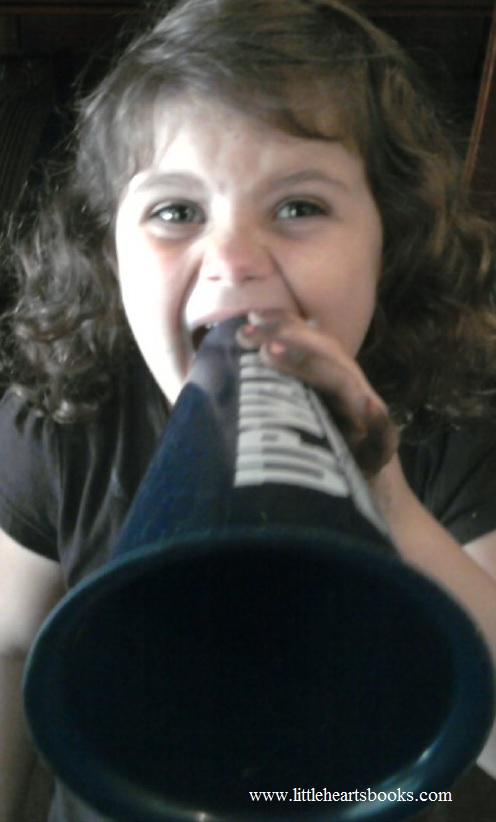 There are some children who are born into the world with the incredible life-gift of a strong will and an indomitable spirit. These children are often deeply misunderstood, and there are rows of books lining bookstore shelves with instructions about how to break their will, how to subdue their spirit, how to force their obedience. What an incredible loss of leadership, passion, and insight this world suffers when parents follow these punitive parenting practices. Not only can we parent these gifted children with gentleness and respect, but the gifts we get in return are priceless!
There are some children who are born into the world with the incredible life-gift of a strong will and an indomitable spirit. These children are often deeply misunderstood, and there are rows of books lining bookstore shelves with instructions about how to break their will, how to subdue their spirit, how to force their obedience. What an incredible loss of leadership, passion, and insight this world suffers when parents follow these punitive parenting practices. Not only can we parent these gifted children with gentleness and respect, but the gifts we get in return are priceless!
Take a look at some of the common descriptions used when referring to the characteristics of a strong-willed child:
Demanding, Insistent, Stubborn, Bossy, Cocky, Difficult, Challenging, Fixated, Contrary, Rebellious, Defiant
Now look at some of the common characteristics of adults who are world leaders, CEO’s, entrepreneurs, innovators, world-class athletes, and the like:
Decisive, Determined, Persistent, Authoritative, Confident, Valiant, Gutsy, Committed, Resourceful, Nonconforming, Bold
Note that the characteristics are the same, but the characterizations are negative when applied to a child and positive when applied to an adult.
Other characteristics of strong-willed children that coincide with the characteristics of adult leaders in their fields are:
- They are typically highly creative and intelligent.
- They are usually passionate and intense in their interests and beliefs.
- They often have an insatiable need to know ‘why.’
- They typically learn by doing.
- They tend to have an intense need to test the status quo.
- They are typically highly perfection-oriented, but often that is focused on their expectations of themselves instead of others.
- They tend to need high levels of validation.
- They usually have an intense need to be heard.
- They often have a strong need for emotional safety.
- They tend to be resistant to change unless they feel like they have some control over the change.
- They are often highly sensitive.
- They are typically intensely focused on their latest project or interest.
- They tend to be conscientious and highly committed.
- They are usually intensely independent.
While there’s no doubt that it’s a challenge having a child who seems to challenge everything, there are ways to work with them rather than against them to preserve and nurture their unique gifts. Maintaining a healthy parent/child relationship is vital as you work to find a balance between setting limits with your richly spirited child while not limiting their freedom to stretch and grow and develop into the person they were created to be.
The key to preserving your trust relationship with your child is remaining calm and present and supportive, even while setting and maintaining reasonable boundaries. It is helpful to remember that the most strong-willed children tend to be the ones who identify the most strongly with their parents. So instead of viewing their seemingly constant challenges as defiance or attempts to thwart authority, work to parent from a place of understanding that your strong-willed child is actually on a discovery mission and is doing endless ‘research’ on you by testing and retesting and digging and chiseling to discover all of your quirks and foibles and ups and downs and strengths and weaknesses. This kind of testing isn’t negative unless you make it into a battle of wills instead of responding with gentle, respectful guidance. Taking this stance will help you to keep from seeing the challenges as personal insults and, instead, see the challenges as attempts to learn and grow and understand.
There is no doubt, though, that parenting a child with the gift of a strong will is a constant exercise in patience and self-regulation. The personal growth you will experience is invaluable as you seek to parent with empathy and wisdom and compassion, but it can be draining and will often stretch you far, far out of your comfort zone. Knowing that and being prepared for it will help you cope with the inevitable stresses, and being ready ahead of time with some specific strategies for handling the challenges will help you to respond calmly and effectively.
This is a good place to revisit the Three C’s of gentle discipline—Connection, Communication, and Cooperation.
Connection ~ Maintaining a secure connection with your spirited child is vital. It is the springboard from which all of your interactions with your child will originate, and it is the touchstone to which you will both return, again and again and again, when your relationship gets strained and stained and stretched.
- Play word games, board games, rough-and-tumble outdoor games, silly face in the mirror games. Play is the language of childhood, so make sure to speak your child’s language every day.
- Laugh together. Humor is an undervalued parenting tool. But it lowers defenses, inspires smiles, brings people together, and reconnects hearts.
- Read storybooks, chapter books, travel brochures, encyclopedias, anything that will inspire you to dream together, talk, plan, get excited, share interests.
- Focus more on who your child is than on what your child does. Remember, you’re growing a person, not fixing a problem. So make sure to spend time getting to know the person, not just the child. It doesn’t have to cost anything. Just walk together, talk together, share ice cream cones, spot shapes in the clouds, and enjoy each other.
Communication ~ Children have their own ‘inner world’ of thoughts and plans and problems and worries and hopes and dreams that are occupying their time and attention, so a lack of cooperation is often simply the result of having a different agenda than we do. Getting some insight into that ‘inner world’ is key in guiding and growing them respectfully.
- Listen with your heart. Listen ‘between the lines’ to what your child is communicating through their behavior. Listen and listen and listen some more. That is always, always the first step in communicating with your child.
- Reflect, connect, and redirect. Reflect what you hear, whether it’s communicated by your child’s behavior or their words. This not only validates their emotions and lets them know that you hear and understand them, but it also helps them to understand their own emotions. For instance, if your child is upset that he can’t have a cookie after brushing his teeth for bedtime, try saying, “I hear you. You’re upset because you want a cookie.” Then reestablish your connection, “I like cookies, too!” and offer a solution, “How about we go pick out the two best cookies and put them in a special container that we can take to the park in the morning?”
- Don’t take non-compliance as a personal insult. A strong-willed child is very much their own person with their own agenda. Focus on inviting cooperation instead of demanding obedience. Whether it’s staying in bed or cleaning up or whatever the issue, make it a team effort and come up with a game plan ahead of time. For example, you could say, “You seem to be having trouble staying in bed at night. What do you think would help you to be more ready to go to sleep when it’s time for bed?” or “It’s important to pick up our things so they don’t get broken, let’s put on the timer and work together for ten minutes and see who gets the most picked up.”
- Make a firm commitment not to resort to punishments to control behavior. The resentment that comes from being punished absolves children in their own minds of responsibility. It doesn’t teach them responsibility, and resentment can actually cause a lot of the behaviors you are trying to avoid.
- Communicate daily, outwardly to your child and inwardly to yourself, the positive aspects of your child’s personality. When the focus is on ‘fixing’ a child, they get the message that they are somehow broken, and that is not a healthy self-image to take into adulthood.
- ‘No’ is not a complete thought. It is an imperative, a command. It doesn’t teach. It tells. If you want your child to learn to think like an adult, take the time to explain your adult thinking.
- Remember that children, especially when they are upset, open ‘conversations’ through their behavior, and it’s up to us, the only adults in the relationship, to gently guide them toward continuing those conversations verbally as well as equipping them with the resources to be able to do so.
- Also keep in mind that the social mores of rudeness simply aren’t inborn and don’t apply to early interactions with our children. They are learned by imitating how we as parents behave. Politeness is a heart issue that cannot be imposed by the will of another unless we want it to only be an external façade instead of a heartfelt courtesy. Helping your strong-willed child learn to speak kindly means speaking kindly to your child as well as offering guidance when they’ve been rude such as saying, “That is not a nice tone of voice” or “That isn’t a kind thing to say” and then offering a do-over “Can you try saying that to me again more nicely? I’ll always try my best to be nice to you, and I would like you to try to do the same for me.” (see Appendix B in The Gentle Parent: Positive, Practical, Effective Discipline for more ideas)
Cooperation ~ Always keep at the forefront of your parenting goals that you are seeking thoughtful cooperation, not mindless compliance. That way you will remember to treat your child as a thoughtful individual with ideas and needs and feelings of their own instead of a mindless drone there to do your bidding.
- Set clear limits and explain them in age-appropriate terms. Remember, if you want to invite cooperation, you have to actually issue the invitation to cooperate!
- Limit the number of limits. Spirited children are often stressed children simply because of their own intense emotions and reactions to things, so set them up for success by keeping your limits few and clear and by maintaining them consistently.
- Make sure to let your child have a voice in determining the limits so they feel like they have some control over their lives and so they feel some ownership over the limits.
- Brainstorm together ways of helping everyone to work together. Some ideas are to come up with hand signals or words that remain your little secret codes to indicate when it’s time to leave the park or to do homework or to dial the activity level or noise volume down a few notches.
- Invite cooperation by creating daily routines together. Don’t be surprised if your child ends up being the one who is a stickler for following the routine, even to the point of nagging you to follow it. These gifted children tend to be all-in, fully focused and committed, and they’ll expect you to be the same!
- Cooperate with your child’s needs and personality by working with them rather than against them. For instance, if you know that your child has a hard time leaving a project, give them plenty of time to find a good stopping point when you need them to leave it for a while. Or if you know that your child has a hard time following directions at bedtime, try writing or drawing the tasks that need to be done (i.e. toothbrushing, pajamas, etc.) on ping-pong balls and put them in a small ‘bedtime jar’ so your child can feel some control over their routine as they independently pick out the balls one by one for a ‘surprise’ nighttime order of tasks or take them all out and decide what order to do them in themselves.
- If you are already locked in a head-to-head power struggle, put away your boxing gloves so your child will (eventually!) feel safe putting away theirs. When you battle with your child, you may win a skirmish or two, but you will lose the treasure…your trust relationship. Putting away the gloves means slowing down, breathing through your own emotions, and finding a way to work through the issue together. Remember, you’re the adult in the relationship, but that doesn’t give you the right to overpower your child; it gives you the responsibility to empower your child. That involves modeling the tools of diplomacy—communication, cooperation, compromise—that you want your child to stock in their own emotional toolkit.
Remember, the children who come into the world with their ‘boxing gloves on’ so to speak are often the ones who become the biggest world changers. It’s not easy raising these little world-changers, I know (Believe me, I know. Two of my six are world-changers-in-the-making!), but the rewards are phenomenal!
Related posts:
Healing Your Hurts So You Don’t Hurt Your Children
Backtalk is Communication…LISTEN
When Children Act Out ~ Reflecting Our Emotions
Bridge Over Troubled Waters~Parenting a ‘Problem’ Child
The Incredible Power of the Whisper
The Taming of the Tantrum: A Toddler’s Perspective
The Thoughtful Parent’s Guide to Positive Parenting Guides
 Award-winnning author, L.R.Knost, is the founder and director of the children's rights advocacy and family consulting group, Little Hearts/Gentle Parenting Resources, and Editor-in-Chief of Holistic Parenting Magazine. Books by L.R.Knost include Whispers Through Time: Communication Through the Ages and Stages of Childhood ; Two Thousand Kisses a Day: Gentle Parenting Through the Ages and Stages ; The Gentle Parent: Positive, Practical, Effective Discipline ; and Jesus, the Gentle Parent: Gentle Christian Parenting the first four books in the Little Hearts Handbook gentle parenting series, and children’s picture books Petey’s Listening Ears and the soon-to-be-released Grumpykins series.
Award-winnning author, L.R.Knost, is the founder and director of the children's rights advocacy and family consulting group, Little Hearts/Gentle Parenting Resources, and Editor-in-Chief of Holistic Parenting Magazine. Books by L.R.Knost include Whispers Through Time: Communication Through the Ages and Stages of Childhood ; Two Thousand Kisses a Day: Gentle Parenting Through the Ages and Stages ; The Gentle Parent: Positive, Practical, Effective Discipline ; and Jesus, the Gentle Parent: Gentle Christian Parenting the first four books in the Little Hearts Handbook gentle parenting series, and children’s picture books Petey’s Listening Ears and the soon-to-be-released Grumpykins series.
‘The Gentle Parent: Positive, Practical, Effective Discipline’
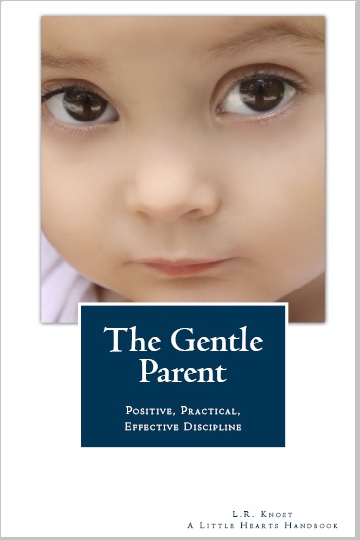 I’m so excited to share the release of The Gentle Parent: Positive, Practical, Effective Discipline, the third book in the Little Hearts Handbook series! The first reviews are in, and The Gentle Parent has already received 5-Star ratings and been called “food for a gentle parent’s soul” and “reassuring, relevant, and relatable for parents with children of all ages.” The Parenting Review shared this about The Gentle Parent:
I’m so excited to share the release of The Gentle Parent: Positive, Practical, Effective Discipline, the third book in the Little Hearts Handbook series! The first reviews are in, and The Gentle Parent has already received 5-Star ratings and been called “food for a gentle parent’s soul” and “reassuring, relevant, and relatable for parents with children of all ages.” The Parenting Review shared this about The Gentle Parent:
“Relaxed, Reassuring, Practical ~ Written by L.R.Knost, best-selling, award-winning author of ‘Two Thousand Kisses a Day’ and ‘Whispers Through Time,’ ‘The Gentle Parent: Positive, Practical, Effective Discipline’ shares the simple secrets of a peaceful, happy home in the Three C’s of gentle discipline–Connection, Communication, and Cooperation. In her signature relaxed and poetic style, L.R.Knost gently guides parents through the steps of applying the Three C’s in real-life scenarios from tantrums to defiance to parenting a strong-willed child to healing a broken parent/child relationship. Practical and proven, this newest installment in the Little Hearts Handbook parenting series will be tucked into diaper bags, kept handy on nightstands, and shared with good friends for its research-backed, experience-based, and humor-rich insights, ideas, and inspiration.”
Here’s a peek at the book trailer:
Back cover copy
Written by best-selling parenting and children’s book author and mother of six, L.R.Knost, ‘The Gentle Parent: Positive, Practical, Effective Discipline’ provides parents with the tools they need to implement the Three C’s of gentle discipline–Connection, Communication, and Cooperation–to create a peaceful home and a healthy parent/child relationship. Presented in bite-sized chapters perfect for busy parents and written in L.R.Knost’s signature conversational style, ‘The Gentle Parent’ is packed with practical suggestions and real-life examples to help parents through the normal ups and downs of gentle discipline on the road to raising a generation of world changers.
Table of Contents
~Introduction
Chapter 1 The Problem with Punishment offers insight on the punishment versus discipline debate.
~A Gentle Beginning
Chapter 2 Foundations: Setting the Stage for Discipline shares how our parenting choices in the first days and weeks and months of our children’s lives affect discipline in later stages.
Chapter 3 Castles in the Air: Building on Trust shows how laying a foundation of trust and building on it day by day, night by night, gentle response by gentle response creates the parent/child relationship essential to gentle discipline.
Chapter 4 Safe Surroundings shares simple ways to use baby proofing as visual boundaries to begin gentle limit-setting.
Chapter 5 Reasonable Expectations offers insight into normal child development and how our expectations affect our parenting.
Chapter 6 The Three C’s of Gentle Discipline presents the basic tools of gentle discipline and their components.
~Toddler Time
Chapter 7 Sandbox Soapbox: Toddler Insights shares parenting insights from a toddler’s perspective.
Chapter 8 Toddlers, Tantrums, and Time-In’s, Oh my! gives specific interventions and preventions for coping with and preventing tantrums.
Chapter 9 When Things Get Physical: Hitting, Kicking, Throwing, and Biting offers tools for working through the physical stage with toddlers and preschoolers.
Chapter 10 Testing the Boundaries shares insights and parenting techniques for guiding children through testing behaviors.
Chapter 11 Parenting in Public provides specific parenting tools for coping with behaviors in public places such as parks, shops, and restaurants.
Chapter 12 Crying Wolf: Don’t Be an Old Yeller! gives insight into the consequences of yelling at children.
Chapter 13 Toxic Parenting: Spanking, Shaming, Threatening, Manipulating contrasts peaceful, connected parenting with punitive, controlling parenting and their outcomes.
Chapter 14 All the ‘Right’ Parenting Moves gives insight into the basic truth that we are imperfect humans raising imperfect humans in an imperfect world and therefore no parenting will produce perfection.
~A Preschooler with a Plan
Chapter 15 Hurting Parents, Hurting Children shares ways parents can heal from their emotional baggage instead of passing that baggage along to the next generation.
Chapter 16 The Gift of a Strong-Willed Child offers parents with the tools to help children gifted with a rich and vibrant spirit blossom while still providing them with guidance and limits.
Chapter 17 You’re Not the Boss of Me redefines defiance to give parents a new perspective and offers insights to help parents work through the more challenging behaviors of childhood.
Chapter 18 A Place for Me shares the value of children having a small space of their own to escape from the stresses and sensory overload that can often spark behavioral issues.
Chapter 19 When Children Act Out: Reflecting Our Emotions provides insight into the often unexpected outbursts that signal a child’s need for help in coping with family issues.
Chapter 20 For Everything There is a Season encourages parents to slow down and recognize the basic truth that children are not small adults and to appreciate the beauty of childhood through the eyes of their children.
~Middle Childhood: Becoming Their Own Person
Chapter 21 Thoughtful Cooperation vs. Thoughtless Compliance offers tools for equipping children with inner guidance systems rather than external controls.
Chapter 22 The Butterfly Effect shares intentional shifts we can make in our parenting choices to change the trajectory of our children’s future.
Chapter 23 The Color of Change provides step-by-step changes parents can make to move from a punitive, control-based parenting style to connected, communication-based parenting.
Chapter 24 Bridge Over Troubled Waters: Parenting a ‘Problem’ Child offers insight into the world of the sensitive child and offers parents the tools to guide and support their sensory-gifted children gently and successfully.
Chapter 25 Raising Problem Solvers shares strategies to help parents provide their children with effective problem-solving tools to take into the future.
~Gentle Parenting: Teens and Beyond
Chapter 26 Children of Violence gives a glimpse into a real-world scenario that children experience every day and offers insight into the root of violence and bullying in our society.
Chapter 27 The Discipline of Choice examines the life lessons learned through a teen’s their own choices and the value of unconditional support from a connected parent.
Chapter 28 Helping Hurting Teens compares and contrasts the results of punitive, control-based parenting on adolescents and offers parents alternatives to punishments.
Chapter 29 Twelve Life Lessons for Daughters and Chapter 30 Twelve Life Lessons for Sons reach out and touch parents’ hearts to reawaken their memories of their own adolescent struggles and esteem issues to help them connect with where their teens are so that they can more empathetically and effectively guide them through the often turbulent adolescent years.
Appendix A
Five Gentle Tools for Handling Lying shares a practical and gentle approach to lying.
Appendix B
Backtalk is Communication – LISTEN tackles the startling truth that when children talk back they are actually communicating.
Appendix C
Twelve Steps to Gentle Parenting: Setting Yourself Up for Success offers a twelve month, step-by-step approach to work toward a more gentle style of parenting.
Sample Chapters
The Gift of a Strong-Willed Child
Bridge Over Troubled Waters~Parenting a ‘Problem’ Child
Book Reviews and Author Interviews
I’m so honored to have these wonderful people and organizations participating in the book tour for The Gentle Parent: Positive, Practical, Effective Discipline. (Links will be added as the tour stops go live!)
The Natural Parent Magazine – Australia
Dr. Laura Markham – Clinical Child Psychologist
Green Child Magazine Holiday Gift Guide
Kidlutions: Solutions for Kids
Synergy: Gentle Parenting Resources ~ South Africa
Susan Heim, author/editor ‘Chicken Soup for the Soul’
Family Review Center
The San Francisco Review
The Peaceful Housewife
Littles Rule the Roost
The Mahogany Way
You can check out more reviews here: The Gentle Parent: Positive, Practical, Effective Discipline
*Note: For those outside the US who would like to purchase books by L.R.Knost without Amazon’s high international shipping costs, a limited supply is available directly from the author here.
Also, *FREE!* to download on Kindle (can be downloaded to your computer, iPhone, or iPad) all day on November 1st and 10th ~ Gentle Parenting Workshop 1: Getting Started on Your Gentle Journey
 Award-winnning author, L.R.Knost, is the founder and director of the children's rights advocacy and family consulting group, Little Hearts/Gentle Parenting Resources, and Editor-in-Chief of Holistic Parenting Magazine. Books by L.R.Knost include Whispers Through Time: Communication Through the Ages and Stages of Childhood ; Two Thousand Kisses a Day: Gentle Parenting Through the Ages and Stages ; The Gentle Parent: Positive, Practical, Effective Discipline ; and Jesus, the Gentle Parent: Gentle Christian Parenting the first four books in the Little Hearts Handbook gentle parenting series, and children’s picture books Petey’s Listening Ears and the soon-to-be-released Grumpykins series.
Award-winnning author, L.R.Knost, is the founder and director of the children's rights advocacy and family consulting group, Little Hearts/Gentle Parenting Resources, and Editor-in-Chief of Holistic Parenting Magazine. Books by L.R.Knost include Whispers Through Time: Communication Through the Ages and Stages of Childhood ; Two Thousand Kisses a Day: Gentle Parenting Through the Ages and Stages ; The Gentle Parent: Positive, Practical, Effective Discipline ; and Jesus, the Gentle Parent: Gentle Christian Parenting the first four books in the Little Hearts Handbook gentle parenting series, and children’s picture books Petey’s Listening Ears and the soon-to-be-released Grumpykins series.
Bridge Over Troubled Waters~Parenting a ‘Problem’ Child
[Portions reprinted from The Gentle Parent: Positive, Practical, Effective Discipline by L.R.Knost. Two Thousand Kisses a Day: Gentle Parenting Through the Ages and Stages and Whispers Through Time: Communication Through the Ages and Stages of Childhood also available on Amazon and through other major retailers.]

We all have times when we struggle, when life gets hard, when stresses overtake us and the constant demands to grow and change and learn inherent in simply being human just feel like too much to bear.
Children are no different than adults in that they, too, can often feel overwhelmed by life. The sheer volume of growth and change and learning integral to childhood inevitably produce stress, though that isn’t necessarily a negative for all children. Some children, just like some adults, seem to have an innate ability to cope with stress, to adapt to change, and to face and conquer challenges. Some personalities even thrive on it!
But then there are those children who simply seem to struggle with life. Growth spurts cause incredible stress and discomfort. Change produces intense anxiety and resistance. And learning, being introduced to new thoughts and ideas, being stretched and challenged, inspires unease and distress.
These children are often labeled problem children, strong-willed, difficult, entitled, or brats. The reality, though, is that these are often the most sensitive children, small people who were created to be intimately in-tune with their bodies, their environment, and their fellow human beings. They feel, deeply and empathetically, other people’s pain and distress. They endure shifts in their surroundings like frontal assaults to their safety and security. They experience touch and movement of their bodies, and growth within their bodies, with painful intensity.
All too often, these sensationally gifted children are misunderstood. Their strong reactions to stimuli are misinterpreted as willfulness and stubbornness. They are punished instead of helped, controlled instead of supported, hurt instead of heard. Their uniqueness, gifts, and insights are forced underground where they often simmer in silence, bursting forth in flashes of rage or turning inward in brooding depression.
These children don’t need labels. They don’t need to be contained or controlled. They need what all children need…love, understanding, and guidance to grow into the gifted, unique individuals they were created to be.
Helping and supporting your sensitive child who is struggling is like building a bridge over troubled waters using the Three C’s of gentle discipline:
Connect:
- Observe and really get to know, understand, and appreciate the gifts and needs of the unique little person you are privileged to parent.
- Build a foundation of trust and respect in your parent/child relationship by ‘listening’ to the needs being expressed by your child’s behavior even when their behavior seems completely out of proportion to the situation.
Communicate:
- Keep an open door policy, particularly in the late evening hours when the house is quiet and everyone else is settled for the night. Sensitive children often need stillness to feel safe enough to begin processing all of the overwhelming stimuli and emotions they experience throughout the day.
- Help them to verbalize their feelings and experiences by listening to their hearts and not just their words, and quietly offering observations to help them to put things into perspective.
Cooperate:
- Work with your sensitive child to help them find coping mechanisms that will help them deal with overwhelming sensations, emotions, and situations. Some ideas are to offer them options such as…
- wearing noise-cancelling headphones to block out extraneous noises
- escaping to a Cozy Cave to take a break from the stresses of daily life
- creating a private code word that they can use to let you know they are feeling overwhelmed or that you can use to alert them that they may need to take a break or to dial things down a notch or two
- Equip them with tools to express themselves in acceptable ways (i.e. “It’s not okay to be rude, but it is okay to tell someone you need a break” or “It’s not okay to run away at school, but it is okay to go to your teacher and tell them you’re having a hard time.”)
- Work with them intentionally on a daily basis to overcome the stresses and minimize the impacts of what is, to us, normal daily life, but to them can be deeply troubling experiences.
Building a strong, supportive bridge into the future with your sensitive child will provide them with the coping skills they’ll need as adults to overcome normal stresses and challenges as well as those that come when life inevitably flows into troubled and turbulent waters.
For more tips for parenting your sensitive child and helping them learn coping mechanisms to deal with stresses, see The Gentle Parent: Positive, Practical, Effective Discipline.
Related posts:
Backtalk is Communication…LISTEN
The Gift of a Strong-Willed Child
When Children Act Out ~ Reflecting Our Emotions
The Incredible Power of the Whisper
The Taming of the Tantrum: A Toddler’s Perspective
The Thoughtful Parent’s Guide to Positive Parenting Guides
Simon and Garfunkel – Bridge Over Troubled Water Studio Version
When you’re weary, feeling small
When tears are in your eyes
I will dry them allI’m on your side
When times get rough
And friends just can’t be foundLike a bridge over troubled water
I will lay me down
Like a bridge over troubled water
I will lay me downWhen you’re down and out
When you’re on the street
When evening falls so hard,
I will comfort youI’ll take your part
When darkness comes
And pain is all aroundLike a bridge over troubled water
I will lay me down
Like a bridge over troubled water
I will lay me downOh, if you need a friend
I’m sailing right behindLike a bridge over troubled water
I will ease your mind
Like a bridge over troubled water
I will ease your mind…
 Award-winnning author, L.R.Knost, is the founder and director of the children's rights advocacy and family consulting group, Little Hearts/Gentle Parenting Resources, and Editor-in-Chief of Holistic Parenting Magazine. Books by L.R.Knost include Whispers Through Time: Communication Through the Ages and Stages of Childhood ; Two Thousand Kisses a Day: Gentle Parenting Through the Ages and Stages ; The Gentle Parent: Positive, Practical, Effective Discipline ; and Jesus, the Gentle Parent: Gentle Christian Parenting the first four books in the Little Hearts Handbook gentle parenting series, and children’s picture books Petey’s Listening Ears and the soon-to-be-released Grumpykins series.
Award-winnning author, L.R.Knost, is the founder and director of the children's rights advocacy and family consulting group, Little Hearts/Gentle Parenting Resources, and Editor-in-Chief of Holistic Parenting Magazine. Books by L.R.Knost include Whispers Through Time: Communication Through the Ages and Stages of Childhood ; Two Thousand Kisses a Day: Gentle Parenting Through the Ages and Stages ; The Gentle Parent: Positive, Practical, Effective Discipline ; and Jesus, the Gentle Parent: Gentle Christian Parenting the first four books in the Little Hearts Handbook gentle parenting series, and children’s picture books Petey’s Listening Ears and the soon-to-be-released Grumpykins series.
All the ‘Right’ Parenting Moves
[Portions reprinted from The Gentle Parent: Positive, Practical, Effective Discipline by L.R.Knost. Whispers Through Time: Communication Through the Ages and Stages of Childhood and Two Thousand Kisses a Day: Gentle Parenting Through the Ages and Stages also available on Amazon and through other major retailers.]
~~~~~~~~~~~~~~~~~~~~~
“Gentle Parenting doesn’t cure childhood because childhood isn’t a disease. It doesn’t fix children because children aren’t broken. Time is the only cure, the only fix. Time passes. Childhood ends. Gentle parenting simply recognizes normal childhood behavior as normal and guides children through the normal ages and stages of childhood with compassion and respect.”
~L.R.Knost
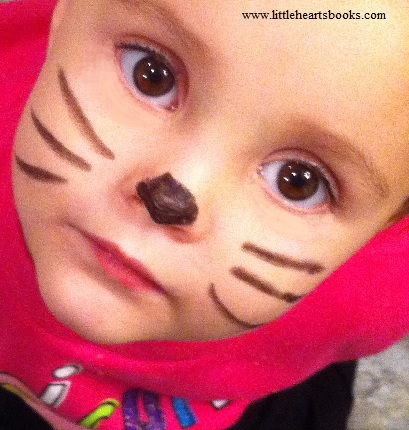 Ever have one of those days where you make all the ‘right’ parenting moves, but your children still act like children? (Do I hear a resounding “YES!!!” bouncing off the walls of cyberspace? Lol.) Of course we all have, and a whole lot more than just one day, too!
Ever have one of those days where you make all the ‘right’ parenting moves, but your children still act like children? (Do I hear a resounding “YES!!!” bouncing off the walls of cyberspace? Lol.) Of course we all have, and a whole lot more than just one day, too!
I’m still chuckling over the comment someone left me that said something along the lines of me clearly never having had a ‘problem child’ and wishing me good luck if I ever have more than one child because then my chances of having said ‘problem child’ would increase. For the record, amongst my six children I have two with sensory issues, one with full-blown Sensory Processing Disorder, two with ADD, one with Auditory Processing Disorder, and two who would be labeled ‘strong-willed’ or ‘high-maintenance’ or even ‘problem children’ by people who want to label children.
 The thing that people so often misunderstand, though, is that gentle parenting is not about stopping our children from being children. It’s about guiding our children through childhood with gentleness, compassion, and respect. It’s about viewing normal childhood behavior as normal, and working with our children in developmentally appropriate ways to teach and inspire and encourage them to become the extraordinary people they were created to be.
The thing that people so often misunderstand, though, is that gentle parenting is not about stopping our children from being children. It’s about guiding our children through childhood with gentleness, compassion, and respect. It’s about viewing normal childhood behavior as normal, and working with our children in developmentally appropriate ways to teach and inspire and encourage them to become the extraordinary people they were created to be.
So, when my extraordinary little people act like children and I make all the ‘right’ parenting moves and yet it still turns out to be a frustrating, tiring, out-of-sorts kind of day for all of us, that’s perfectly okay with me. We all have days like that. We start over again the next day…and the day after that…and the day after that. That’s just how crazy, beautiful, wonderful life with children goes. ♥
For more gentle parenting resources, check out:
The Gift of a Strong-Willed Child
Bridge Over Troubled Waters~Parenting a ‘Problem’ Child
Backtalk is Communication…LISTEN
The Taming of the Tantrum: A Toddler’s Perspective
Practical, Gentle, Effective Discipline
200 Ways to Bless Your Children with a Happy Childhood
The Thoughtful Parent’s Guide to Positive Parenting Guides
When Children Hit~10 Tips for Parents
Testing the Boundaries~What’s a Parent to Do?
Toddlers, Tantrums, and Time-Ins, Oh My!
 Award-winnning author, L.R.Knost, is the founder and director of the children's rights advocacy and family consulting group, Little Hearts/Gentle Parenting Resources, and Editor-in-Chief of Holistic Parenting Magazine. Books by L.R.Knost include Whispers Through Time: Communication Through the Ages and Stages of Childhood ; Two Thousand Kisses a Day: Gentle Parenting Through the Ages and Stages ; The Gentle Parent: Positive, Practical, Effective Discipline ; and Jesus, the Gentle Parent: Gentle Christian Parenting the first four books in the Little Hearts Handbook gentle parenting series, and children’s picture books Petey’s Listening Ears and the soon-to-be-released Grumpykins series.
Award-winnning author, L.R.Knost, is the founder and director of the children's rights advocacy and family consulting group, Little Hearts/Gentle Parenting Resources, and Editor-in-Chief of Holistic Parenting Magazine. Books by L.R.Knost include Whispers Through Time: Communication Through the Ages and Stages of Childhood ; Two Thousand Kisses a Day: Gentle Parenting Through the Ages and Stages ; The Gentle Parent: Positive, Practical, Effective Discipline ; and Jesus, the Gentle Parent: Gentle Christian Parenting the first four books in the Little Hearts Handbook gentle parenting series, and children’s picture books Petey’s Listening Ears and the soon-to-be-released Grumpykins series.
Letter from a Teenage Son Who Was Spanked as a Small Child
[L.R.Knost, best-selling author of The Gentle Parent: Positive, Practical, Effective Discipline, Whispers Through Time: Communication Through the Ages and Stages of Childhood and Two Thousand Kisses a Day: Gentle Parenting Through the Ages and Stages available on Amazon and through other major retailers.]
~~~~~~~~~~~~~~~~~~~~~
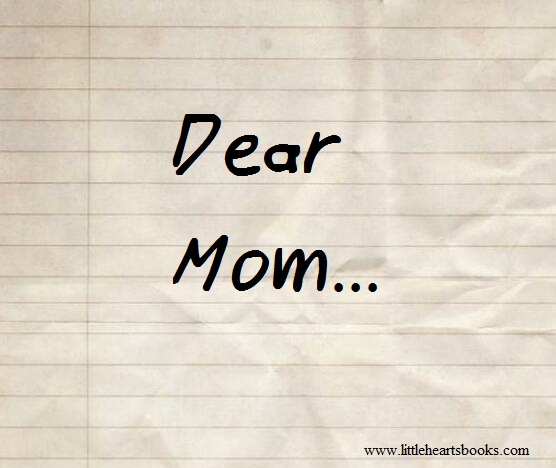 A gentle mama overseas gave me permission to share parts of our email exchange that spanned several months and ended with a deeply touching letter from her son:
A gentle mama overseas gave me permission to share parts of our email exchange that spanned several months and ended with a deeply touching letter from her son:
Hi, I spanked my three elder sons when they were younger. I am a very gentle person so it was never in anger ( I struggled to do it but read how I had to gain control). My teenage sons love me very much and seem to have no hassles at all with listening and respecting me. I have raised my younger two daughters, aged 8 years and 19 months without hidings. As I read up on gentle parenting only after their births, I am struggling with both of them to respect and listen. Ok the baby is still so little! But my oldest daughter is really loving and kind, but does not listen! My sons spoke to me the other day and said I have no authority with them and why don’t I just spank them already. I am at a cross roads. My older daughter of 8 is too old to spank! Have I made a mistake? My baby girl is so sweet and I don’t want to smack her on her bottom but I feel like when she throws tantrums it takes me ages to negotiate and in the end she gets her way, whereas when my boys were little they threw a tantrum and all I said in a calm voice was “stop or you will get a smack on the bottom” and they stopped shortly. I want to be a good parent, but above all I want my babies to be safe and know to listen. Please encourage me with facts as to why I must stick to no spanking for defiance, because I am very confused now.
I shared You’re Not the Boss of Me! and Practical, Gentle, Effective Discipline with this gentle mama and discussed how changing parenting styles is hard on parents, but sometimes we forget how hard it can be for children, too. Her older sons were upset with their mother for not spanking their little sisters as they were spanked. They felt like spanking was good enough for them and remembered being forced to obey and didn’t understand why their mother was letting their sisters get away with not listening. In our discussion, I asked her to look at it another way–she would never allow her older sons to hit their little sisters, but her boys wanted the little girls to be hit like they were. Thinking of it that way understandably upset her…
My boys are very gentle boys and have never hurt their sisters and would never HIT their sisters and they don’t wish for them to be HURT. They are incredibly protective. And a lot more polite and caring than almost all of their friends. I have a lot of children over to play and I really don’t see a mean bone in my boys’ bodies. They just feel that their sister is disrespectful towards me and at times her not listening makes it unpleasant for everyone. They feel there should be consequences to her actions.
Here is the rest of our email conversation: I hear you, mama. Replacing euphemisms like spanking, smacking, hidings, etc. by their definition, hitting, is very uncomfortable. The thing is, even domestic violence used to have euphemisms such as “reasonable smacking of wives” and “necessary chastisement” in order to make them more palatable. It wasn’t until society began to call it what it was, hitting, abuse, beating, violence, that society’s views changed. The same is true for parenting. If we want to change, we have to face the reality of what we are trying to change from. If we whitewash it with euphemisms, our motivation to change will be diminished and our chances of success limited. Your sons sound like wonderful boys, and I’m sure they love their sisters in the same way you loved your boys even while you were spanking them. But now you want something better for your little ones, and it’s not too late for you to want that same better thing for your boys, either. Yes, they got hit when they were little and misbehaved. And now they think hitting is the way to control small children, which is why they want you to hit their little sisters. But if you talk with them honestly about regretting having hit them and ask for their support as you try to move away from using threats and hitting to control their sisters and trying to work toward a communication-based, peaceful parenting style, then your sons will begin to learn that maybe hitting children isn’t they best way to raise them. And, since you will be communicating with your sons respectfully and honestly, you will actually be modeling the exact kind of parenting you are wanting to use with their little sisters…connection, communication, respect–an invitation to cooperate. It’s not easy, mama, but your boys will end up more peaceful parents themselves if you take the time to involve them in your transition to gentle parenting with not only them, but their little sisters, too.
I am trying to wrap my head around it all. We were raised with abuse and my older four children’s dad, who is no longer around, abused us too. But I am remarried to a very gentle man who does not agree with spanking, so he supports me now in trying. I will persevere. Thank you.
I know you are, mama. And it is so, so hard. The Little Hearts community of parents are all here for one reason, to support and encourage and share with each other on our gentle parenting journeys. None of us are perfect, and all of us have things to learn and struggles to overcome. Working together will help all of us do better, though, and that’s why we’re here. ♥
(A few days later): I have been reading your work and thinking about my parenting ways so much! I considered myself a gentle parent all these years, simply because I never smacked in anger but out of a duty almost to stick to the “rules” I had been taught in Christian Parenting books on disciplining etc. I am a loving Mommy and meant well, but something always bothered me about smacking my boys. I was told it bothered me because I had not been properly raised. Anyhow I was praying as I was washing the dishes today and felt my heart swell and a rush of emotions. I am so positive that the Lord spoke to me. I felt completely determined to follow your advice and believe now in my heart that this gentle parenting is the right way to love and care for children. I sat my sons down and read a few of your quotes etc. to them. I then apologized for smacking their little bottoms when they were younger when they were defiant instead of talking it through with them better. My sons all hugged me tight and my 16 year old son said, “Mom, we’re sorry we didn’t listen to you because we don’t care that you smacked us but we care that you had to be someone you aren’t to feel you had control of us. It’s not in your nature to smack, Mom, that’s why you were always so upset after you smacked us, because it changed how you felt about YOU. Now you can be the parent you will be proud of.” Ah it broke my heart. I am so grateful I found your wisdom. I will never meet you to thank you, but I am sending you gratitude across the oceans!!
Oh, mama, that’s so beautiful. Your boys sound like amazing young men!
(Weeks later): Things are working well. Thank you for your wise kind heart. I am loving raising my children this way!! I am truly happy for the first time. I have always loved being a mother, but hated the confusion and regret after hidings, never sat well with me. Always had to psych myself up to go get the wooden spoon, take them to smack bottom…ahhhhhhggggg the knot I get in my tummy just thinking if it! Really pleased I saw the light and had the strength of my convictions at last TO CHANGE. I found your site two years after I decided no more hidings! So I had been doing the gentle parenting thing already, but I almost gave up. I am so grateful to you for encouraging us all to wait for the greater long term reward.
Thank you, mama. You don’t know how much that means to me to hear that! ♥
(Months later): My son wrote a letter to me. I thought it may help other parents. I cried so much I felt sick. I regret the past. I used to think I was such a great mom. I thought I was fair and set good boundaries and tried to protect them from their biological dad’s temper by ‘keeping them in line.’ I am working daily to heal my older sons. This letter was confirmation and also the realization that we cannot escape consequences. My son is loving and affectionate towards me, but is this letter ok? I mean in your opinion is he ok?
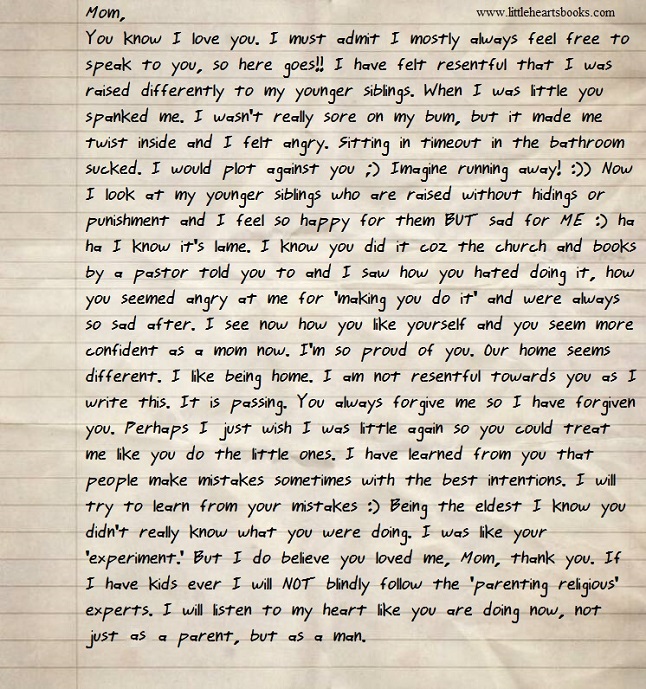 Oh, mama, that made me tear up. Your guy is more than okay. He’s brilliantly more than okay! He’s thoughtfully working through his feelings and sharing them with you honestly because he trusts you with his big emotions. And he’s extrapolating from his experiences and yours and coming up with a life plan based on a strength of character that is very, very evident in his writing. ♥
Oh, mama, that made me tear up. Your guy is more than okay. He’s brilliantly more than okay! He’s thoughtfully working through his feelings and sharing them with you honestly because he trusts you with his big emotions. And he’s extrapolating from his experiences and yours and coming up with a life plan based on a strength of character that is very, very evident in his writing. ♥
~~~~~~~~~~~~~~
♥ Changing the World, One Little Heart at a Time ♥
Related posts: When Children Act Out ~ Reflecting Our Emotions The Problem with Punishment Backtalk is Communication…LISTEN Changing the World, One Little Heart at a Time 12 Steps to Gentle Parenting Practical, Gentle, Effective Discipline The Color of Change Children of Violence
 Award-winnning author, L.R.Knost, is the founder and director of the children's rights advocacy and family consulting group, Little Hearts/Gentle Parenting Resources, and Editor-in-Chief of Holistic Parenting Magazine. Books by L.R.Knost include Whispers Through Time: Communication Through the Ages and Stages of Childhood ; Two Thousand Kisses a Day: Gentle Parenting Through the Ages and Stages ; The Gentle Parent: Positive, Practical, Effective Discipline ; and Jesus, the Gentle Parent: Gentle Christian Parenting the first four books in the Little Hearts Handbook gentle parenting series, and children’s picture books Petey’s Listening Ears and the soon-to-be-released Grumpykins series.
Award-winnning author, L.R.Knost, is the founder and director of the children's rights advocacy and family consulting group, Little Hearts/Gentle Parenting Resources, and Editor-in-Chief of Holistic Parenting Magazine. Books by L.R.Knost include Whispers Through Time: Communication Through the Ages and Stages of Childhood ; Two Thousand Kisses a Day: Gentle Parenting Through the Ages and Stages ; The Gentle Parent: Positive, Practical, Effective Discipline ; and Jesus, the Gentle Parent: Gentle Christian Parenting the first four books in the Little Hearts Handbook gentle parenting series, and children’s picture books Petey’s Listening Ears and the soon-to-be-released Grumpykins series.
The Incredible Power of the Whisper

[Reprinted from Whispers Through Time: Communication Through the Ages and Stages of Childhood by L.R.Knost. Two Thousand Kisses a Day: Gentle Parenting Through the Ages and Stages and The Gentle Parent: Positive, Practical, Effective Discipline also available on Amazon and through other major retailers.]
If a picture is worth a thousand words, then a whisper is worth two thousand when it comes to parenting. In the same way that the instinctive human reaction to someone raising their voice is to raise our voice one octave higher, to out-shout the shouter, to over-power the person powering-up on us, the instinctive human response to someone whispering is to quiet down, to lean-in, to listen.
As parents, it’s up to us to exercise the wisdom and maturity to control our own instinctive reaction to our children’s piercing screams, ear-shattering shrieks, and mind-blowing, foot-stomping, out-of-control fits. Small people have big emotions and need help processing them. Their cries as babies and shrieks and tantrums as toddlers and meltdowns as preschoolers are, literally, cries for help.
Ignoring or punishing them, or reacting with anger ourselves, simply forces them to bury their unresolved emotions and causes us to miss an opportunity to not only share our wisdom by helping them process their big feelings, but also to guide our children toward more appropriate ways to communicate as they grow. In some cases, when a child’s emotions are forced underground it results in a child who simmers with hidden rage just waiting to explode again or, worse, the rage may turn inward and result in a child who is withdrawn, detached, or even depressed.
Having parenting tools ready and waiting for the inevitable challenges of raising little humans is wise. When emotions begin running high, and as parents we can feel our own stress levels rising, knowing we have a well-stocked parenting toolbox with tried and tested tools helps us to keep our cool so that we can parent more intentionally and effectively.
In the first weeks of life, a baby has one ‘default’ mode of verbal communication…crying. They may give physical cues to their needs such as chewing on their hands to indicate hunger or the beginning of teething, but their verbal communication takes the sole form of crying.
From those first tiny squeaks and mewls of a newborn, a baby’s cries mature into whimpers, squeals, screams, and sobs, all communicating one thing: “I need help.” When we respond to our baby’s cries quickly and gently, whether it’s to feed them or change them or give them a cuddle, we communicate in return, “I’m here. You can count on me.”
But then there are those times when we’ve fed them, changed them, burped them, rocked and cuddled and walked with them, and their piercing screams still shatter the silence…and our hearts. Those are times when parents often begin to feel overwhelmed, stressed, sometimes even resentful and angry because no matter what they try, they can’t ‘fix’ their baby and make them stop crying. It is in those moments of frustration and distress that we need to breathe in deeply to calm ourselves, then stop stressing over trying to ‘fix’ our baby and instead whisper in our little one’s ear, “I’m here. I’ve got you. We’ll get through this together.” They may not understand our words, but they will hear our heart.
The truth is that a baby’s cries can’t always be ‘fixed’ and sometimes the need they’re communicating is the need to express their emotions, but they always, always need the comfort and assurance that they will be heard and that their needs will be met and that they can trust us to be there for them, no matter what.
Once a baby reaches the crawling, exploring, discovering stage, they often have a great time experimenting with the volume, pitch, and range of their voice, much to the chagrin of their parents and pretty much everyone else within earshot. The ear-shattering squeals and bellows and joyful shrieks at this stage can be disconcerting to us parents, to say the least, especially when our little falsetto performs their operatic interpretation in public places such as doctor’s offices, libraries, and restaurants.
This is a prime opportunity to exercise the power of the whisper. When the first shriek splits the silence, we can hold our finger to our lips, smile like we’re inviting them to join in on a secret, and whisper, “It’s whisper time. Let’s use our little voices together.” Making a game out of it invites cooperation rather than demands obedience, a much more effective parenting technique, and practicing little voices together demonstrates what we want our little one to do instead of simply telling them what we don’t want them to do.
Don’t be surprised if it takes many repetitions over several outings before your little one begins to get the idea, though. As with all parenting, time and patience and an awareness (and acceptance!) of what is normal for each developmental stage is key.
Toddlers and preschoolers are famous for their big tantrums sparked by big emotions and big frustrations. Obviously being aware of and avoiding tantrum triggers such as hunger, tiredness, and over-stimulation is important. But even with the most proactive parenting, there may still be times when our little ones have unexpected, incomprehensible, inconsolable tantrums.
When faced with a toddler or preschooler in the throes of a tantrum, if we know what caused the tantrum, we can validate the emotion with a soft-voiced, “You’re angry (disappointed, sad, hurt) because you (fill in the blank).” Often just hearing their feelings put into words is enough to calm a toddler who is frustrated at their inability to express themselves, but sometimes they need a bit of time and support to work through their big emotions.
If the tantrum continues we need to stay calm and present and remember that we are modeling self-control and self-regulation when we practice those skills instead of having an adult-style tantrum in response to our child’s tantrum. Instead of trying to control our child’s outburst with demands or threats or bribes, we can simply stay close and whisper, “I hear you. I’m here.”
The secret of the whisper in taming a tantrum can be seen in the difference between dumping a bucket of water on a fire, which can force the fire underground where it may smolder and reignite unexpectedly, versus spraying a gentle mist on the fire so it’s slowly and fully extinguished, leaving the ground saturated so the fire won’t reignite. Settling your little one quietly and patiently with a whisper is the gentle mist that saturates them with your unconditional love and support so they don’t simmer with hidden rage that may erupt spontaneously again.
Remember, no matter the problem, kindness is always the right response. When your child is having a problem, stop, listen, then respond to the need, not the behavior. The behavior can be addressed later, after the need has been met, because only then is the door to effective communication truly open.
The thing to keep in mind is that there is no cure for childhood. There is no parenting secret that will ‘work’ to keep children from being children. Children will cry. They will tantrum. They will yell and giggle and climb and run and throw things and build things and hit and hug and explore and make glorious mistakes and incredible discoveries. They will be human. They will be children. And that’s more than okay. That’s beautiful, messy, wonderful childhood, just as it should be.
Parents are guides through the incredible journey of childhood, not to keep their children from experiencing childhood, but to keep them safe as they learn the magnificent life lessons that childhood has to offer.
Related posts:
The Taming of the Tantrum: A Toddler’s Perspective
Practical, Gentle, Effective Discipline
10 Ways to Play with your Children when Play is the Last Thing on your Mind
200 Ways to Bless Your Children with a Happy Childhood
Playground Confessions~Look Who’s Talking!
When Children Hit~10 Tips for Parents
Testing the Boundaries~What’s a Parent to Do?
Toddlers, Tantrums, and Time-Ins, Oh My!
Easy Peasy DIY Parenting Tools
 Award-winnning author, L.R.Knost, is the founder and director of the children's rights advocacy and family consulting group, Little Hearts/Gentle Parenting Resources, and Editor-in-Chief of Holistic Parenting Magazine. Books by L.R.Knost include Whispers Through Time: Communication Through the Ages and Stages of Childhood ; Two Thousand Kisses a Day: Gentle Parenting Through the Ages and Stages ; The Gentle Parent: Positive, Practical, Effective Discipline ; and Jesus, the Gentle Parent: Gentle Christian Parenting the first four books in the Little Hearts Handbook gentle parenting series, and children’s picture books Petey’s Listening Ears and the soon-to-be-released Grumpykins series.
Award-winnning author, L.R.Knost, is the founder and director of the children's rights advocacy and family consulting group, Little Hearts/Gentle Parenting Resources, and Editor-in-Chief of Holistic Parenting Magazine. Books by L.R.Knost include Whispers Through Time: Communication Through the Ages and Stages of Childhood ; Two Thousand Kisses a Day: Gentle Parenting Through the Ages and Stages ; The Gentle Parent: Positive, Practical, Effective Discipline ; and Jesus, the Gentle Parent: Gentle Christian Parenting the first four books in the Little Hearts Handbook gentle parenting series, and children’s picture books Petey’s Listening Ears and the soon-to-be-released Grumpykins series.
The ‘NO’ Zone
[Portions reprinted from Whispers Through Time: Communication Through the Ages and Stages of Childhood by L.R.Knost. Two Thousand Kisses a Day: Gentle Parenting Through the Ages and Stages and The Gentle Parent: Positive, Practical, Effective Discipline also available on Amazon and through other major retailers.]
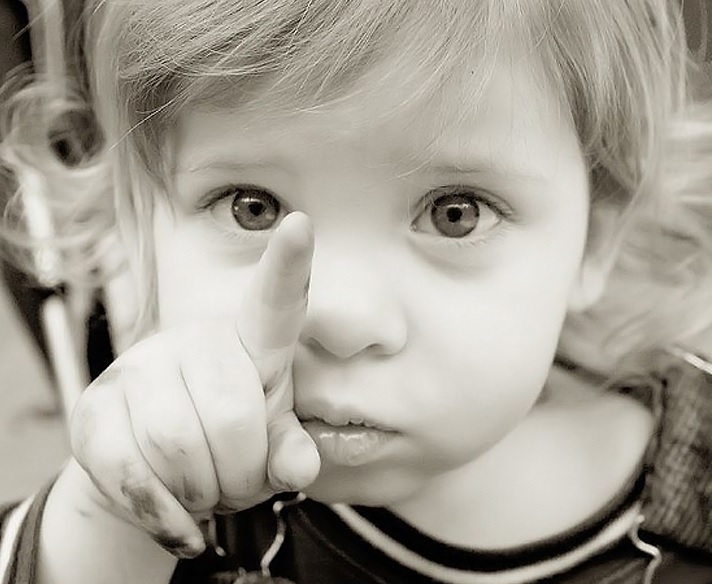 The life of a small child is comprised of a daily onslaught of tempting surfaces begging for the artistry of a crayon, tall places crying out to be scaled, lovely little objects in need of a mouth or nose to visit, and dozens of other alluring glass and liquid and sharp things to be explored through the physics of gravity, the kinetics of concoctions, and the application of Newton’s Laws of Motion. There is only one force powerful enough to defeat this nearly irresistible call of adventure, imagination, and discovery…the No!
The life of a small child is comprised of a daily onslaught of tempting surfaces begging for the artistry of a crayon, tall places crying out to be scaled, lovely little objects in need of a mouth or nose to visit, and dozens of other alluring glass and liquid and sharp things to be explored through the physics of gravity, the kinetics of concoctions, and the application of Newton’s Laws of Motion. There is only one force powerful enough to defeat this nearly irresistible call of adventure, imagination, and discovery…the No!
Every child knows the power of the No to circumvent the most well-laid plans. Even tiny babies just weeks into the world are introduced to its power when they grasp a fistful of hair while nursing or reach for some lovely, squishy stuff while getting a diaper change. That itty bitty two-letter word is packed with a force beyond comprehension to a toddler, and when they finally figure out how to wrap their little lips around those letters and form the word “NO!” themselves, the possibilities seem limitless!
Do you want a cookie? “No!”…Well, actually, yes, but how cool is it that when I said “No!” I controlled whether or not someone gave me a cookie!
Do you want Daddy to hold you? “No!” Well, yes, but I got to decide whether someone held me or not for a change!
Do you want to play outside? “No!” Actually, I do, but do I really get to decide for myself where I go? Cool!
That kind of power and control can go to a little person’s head, for sure! And the change in the big people when the word is used against them clearly demonstrates its incredible value. Their faces go from happy to serious or even angry, and sometimes a little person can even make a big person yell. What dazzling power!
And then when little ones manage a few more words in their vocabulary, they can add direct quotes from the most powerful beings they know ~ mommy and daddy. Quotes like, “I said ‘No’!” and “Don’t you tell me ‘No’!” and “No means ‘No’!”
The authority! The dominion! The clout! And using them against those powerful beings, watching them turn red in the face and yell and threaten…well, it’s a little scary and makes a small person feel really disconnected and upset…but the surge of intense pleasure at feeling powerful and in control almost makes them feel like a big person for a moment!
And that’s what they most long to be, just like mommy and daddy ~ big and strong and smart and powerful.
So what’s a mommy or daddy to do when confronted with the No from their little power-mongers? First, take a deep breath, and then engage those adult brains.
What inherent power is there, really, in a little two-letter word? Only the power we give it! What if, instead of that tiny word being able to push our buttons, we just disconnected the buttons entirely and didn’t react to the No at all? It would simply become a no, just another word to celebrate our precious little people adding to their fledgling vocabularies.
What if we backed up even further and disenfranchised the No from the beginning? When our newborn baby’s flailing hands caught a tiny fistful of hair, what if we just smiled and gently removed it and kissed those itty bitty little fingers?
When our intrepid little explorers discovered the wonders of kitchen cabinets, what if we used cabinet locks but left one or two full of pots and pans and plastic bins for them to discover?
What if when our little people headed for the walls to do their best Michelangelo interpretation on them, we simply intercepted them and offered alternative canvases?
Or what if when they ascended the kitchen cabinets, we just scooped them up and headed outdoors for some climbing adventures?
The thing is, the No is only the No when we, the adults, make it the No. And it can become simply a no when we get creative and interactive and stop using a tiny two-letter word like it has “Phenomenal Cosmic Power in an itty-bitty living space!” (Aladdin 1994)
Related posts:
When Children Act Out ~ Reflecting Our Emotions
7-Year-Old Gentle Parenting Crusader
Changing the World, One Little Heart at a Time
Practical, Gentle, Effective Discipline
 Award-winnning author, L.R.Knost, is the founder and director of the children's rights advocacy and family consulting group, Little Hearts/Gentle Parenting Resources, and Editor-in-Chief of Holistic Parenting Magazine. Books by L.R.Knost include Whispers Through Time: Communication Through the Ages and Stages of Childhood ; Two Thousand Kisses a Day: Gentle Parenting Through the Ages and Stages ; The Gentle Parent: Positive, Practical, Effective Discipline ; and Jesus, the Gentle Parent: Gentle Christian Parenting the first four books in the Little Hearts Handbook gentle parenting series, and children’s picture books Petey’s Listening Ears and the soon-to-be-released Grumpykins series.
Award-winnning author, L.R.Knost, is the founder and director of the children's rights advocacy and family consulting group, Little Hearts/Gentle Parenting Resources, and Editor-in-Chief of Holistic Parenting Magazine. Books by L.R.Knost include Whispers Through Time: Communication Through the Ages and Stages of Childhood ; Two Thousand Kisses a Day: Gentle Parenting Through the Ages and Stages ; The Gentle Parent: Positive, Practical, Effective Discipline ; and Jesus, the Gentle Parent: Gentle Christian Parenting the first four books in the Little Hearts Handbook gentle parenting series, and children’s picture books Petey’s Listening Ears and the soon-to-be-released Grumpykins series.
Whispers Through Time ~ Book Reviews, Author Interviews & Book Trailer
My first book trailer! This was sooooo fun. My children had a blast making it! My toddler decided she was going to join me during my segment, lol, so you’ll see me chatting with her a few times. Nothing wrong with a glimpse of real life, though, right? So, without further ado, here is the official book trailer for Whispers Through Time: Communication Through the Ages and Stages of Childhood. Enjoy!
I’m so honored to have these incredible voices for children reviewing Whispers Through Time: Communication Through the Ages and Stages of Childhood:
Sweet, Funny, Insightful: Whispers Through Time by L.R. Knost is destined to be a dog-eared favorite, passed down from generation to generation. As long as there are children being born into this world and toddlers having tantrums and teens racing toward adulthood at an alarming pace, there will be parents who will turn to this book for guidance. Why? Not because L.R. Knost has all the answers, but because she shows parents how to find their own answers for their own children and their own families. This guidebook challenges conventional thinking with a wisdom born of experience and a healthy dose of research to back it up. Written with the same unique blend of sweetness and humor, grit and honesty, reassurance and insight that made her first book, Two Thousand Kisses a Day, a best-seller, Whispers Through Time is sure to become a runaway hit in its own right. An absolute must-have for any home library. Highly recommended!
Dr. Laura Markham of AhaParenting Audio interview with the author
The Natural Parent Magazine Book trailer and summary
Kidlutions: Solutions for Kids Book review and contest
Parenting Beyond Punishment Book review and giveaway
The Path Less Taken Book review
Mommy Perks Book trailer and review
The Hippie Housewife Book review and giveaway
Diary of a Natural Mom Book review and giveaway
The Mahogany Way Book review and giveaway
Parenting with Understanding Book review and giveaway
Dr. Lynne Kenney: The Family Coach Book Trailer and review
Nurture Parenting Magazine Book trailer and giveaway
Table of Contents:
Chapter 1 ‘Communication: Whispers Through Time’ explores the importance of communication and connection in parent/child relationships.
Chapter 2 ‘Baby Talk’ celebrates those first moments and days and weeks of communication between newborns and parents.
Chapter 3 ‘Becoming Mommy’ shares the beauty of embracing parenthood.
Chapter 4 ‘Baby Signing: A Gentle Introduction to Communication’ introduces the concept of using baby signs to communicate.
Chapter 5 ‘The Power of Perception’ explores the connection between a parent’s perception of their child’s motives and the parent’s response.
Chapter 6 ‘Eleven Tips to Beat the Mama Blues’ shares eleven ways to work through those sometimes hard, sometimes humdrum days of parenthood.
Chapter 7 ‘The Taming of the Tantrum: A Toddler’s Perspective’ explores life from the perspective of a toddler and offers guidance on how to use communication to reduce or eliminate tantrums.
Chapter 8 ‘The NO Zone’ shares ideas for how to respond when a toddler discovers how to use the word, “NO!”
Chapter 9 ‘The Secret of the Whisper’ offers a unique response to little people’s sometimes big emotions.
Chapter 10 ‘Ten Ways to Play When Play is the Last Thing on your Mind’ shares ten ideas for weaving play into an ordinary day
Chapter 11 ‘A Listening Heart’ breaks down the concept of listening and offers ideas for how to pinpoint the issue if listening is a problem.
Chapter 12 ‘A Child’s Heart’ shares a glimpse of the power of communication and connection.
Chapter 13 ‘Why Whining is a Win’ offers a unique perspective on that age-old annoying behavior…whining.
Chapter 14 ‘Can We Talk?’ explores adults’ use of figurative language and the confusion that can result for children.
Chapter 15 ‘Age of Reason: Why, oh Why, Do They Always Ask Why?’ examines why the why stage is so important.
Chapter 16 ‘Five Gentle Tools for Handling Lying’ shares a practical and gentle approach to lying.
Chapter 17 ‘Rethinking Tattling’ explores the importance of listening to tattling.
Chapter 18 ‘The Artist in the Child’ celebrates the differences in children through the unique perspective of the artist.
Chapter 19 ‘Whisper Words of Wisdom’ examines the unseen wounds that thoughtless words can inflict.
Chapter 20 ‘Love Means Sometimes Having to Say You’re Sorry’ shares the importance of making things right when you’ve done something wrong.
Chapter 21 ‘The sWord and the sTone’ covers the importance of living what you want your child to learn.
Chapter 22 ‘Chatterboxes and Dreamers: Is Your Child an Introvert or an Extrovert?’ discusses the different parenting approaches to different personalities.
Chapter 23 ‘I is for `I dunno’ and That’s Good Enough for Me’ shares some insights into the mysteries of the adolescent mind.
Chapter 24 ‘Backtalk is Communication: LISTEN!’ tackles the startling truth that when children talk back they are actually communicating.
Chapter 25 ‘My Huckleberry Friend’ shares the reasons that a parent should not only be their child’s friend, they should be their best friend.
Chapter 26 ‘Whispering Winds of Change’ explores the process of letting them go while still holding them close.
Chapter 27 ‘Messages in a Bottle: Our Hope for the Future’ shares thirty-two messages to write on the hearts and minds of your children before sending them out into the world.
Appendix A ‘Tips for Talking to Teens’
Appendix B ’12 Steps to Gentle Parenting’
Sample chapters:
Backtalk is Communication…LISTEN
The Taming of the Tantrum: A Toddler’s Perspective
10 Ways to Play when Play is the Last Thing on Your Mind
If you’d like to know more about Two Thousand Kisses a Day: Gentle Parenting Through the Ages and Stages or Whispers Through Time: Communication Through the Ages and Stages of Childhood, click the links to read more editorial and reader reviews.
Note: For those outside the US who would like to purchase books by L.R.Knost without Amazon’s high international shipping costs, a limited supply is available directly from the author here.
 Award-winnning author, L.R.Knost, is the founder and director of the children's rights advocacy and family consulting group, Little Hearts/Gentle Parenting Resources, and Editor-in-Chief of Holistic Parenting Magazine. Books by L.R.Knost include Whispers Through Time: Communication Through the Ages and Stages of Childhood ; Two Thousand Kisses a Day: Gentle Parenting Through the Ages and Stages ; The Gentle Parent: Positive, Practical, Effective Discipline ; and Jesus, the Gentle Parent: Gentle Christian Parenting the first four books in the Little Hearts Handbook gentle parenting series, and children’s picture books Petey’s Listening Ears and the soon-to-be-released Grumpykins series.
Award-winnning author, L.R.Knost, is the founder and director of the children's rights advocacy and family consulting group, Little Hearts/Gentle Parenting Resources, and Editor-in-Chief of Holistic Parenting Magazine. Books by L.R.Knost include Whispers Through Time: Communication Through the Ages and Stages of Childhood ; Two Thousand Kisses a Day: Gentle Parenting Through the Ages and Stages ; The Gentle Parent: Positive, Practical, Effective Discipline ; and Jesus, the Gentle Parent: Gentle Christian Parenting the first four books in the Little Hearts Handbook gentle parenting series, and children’s picture books Petey’s Listening Ears and the soon-to-be-released Grumpykins series.
When Children Act Out ~ Reflecting Our Emotions
[Excerpt from The Gentle Parent: Positive, Practical, Effective Discipline by L.R.Knost. Whispers Through Time: Communication Through the Ages and Stages of Childhood, Two Thousand Kisses a Day: Gentle Parenting Through the Ages and Stages, and Jesus, the Gentle Parent: Gentle Christian Parenting also available on Amazon and through other major retailers.]
~~~~~~~~~~~~~~~~~~~~~
Your sweet little four-year-old has suddenly started throwing his food at the table every. single. night. You’ve tried giving him smaller portions of food, letting him help plan the meals, letting him help cook the meals. You’ve tried asking him to stop, demanding that he stop, pleading with him to stop. You’ve tried rewards, sticker charts, and offering desserts. You’ve put him in time-out, yelled at him, even threatened to spank him, which you’ve never, ever done before. But still he throws food at the table.
Then it happens. You’re sitting down for dinner and ask your spouse how the job hunt went that day. A little motion catches your eye and you glance at your four-year-old just in time to see a meatball fly across the table from a small, sauce-covered hand. But something else catches your attention, too, and instead of focusing on the flying meatball, this time you focus on your child.
In the split second before your little guy launched his food volley, you’d seen the fear, almost panic, in his eyes. Your mind races. Why, if he was so afraid of being spanked, would he go right ahead and throw his food? What in the world would make him do the very thing that might bring about the terrible consequence he seemed to be in a panic over?
You hear a deep sigh from your other side. Your spouse seems to be trying to control his urge to retaliate against the little food-fighter across the table from him. Teeth gritted tightly, he grabs a napkin, scoops up the meatball next to his plate, and resumes the conversation.
“Nothing. No one’s hiring. I don’t know what we’re going to do.”
Before you get a chance to respond, a meatball whizzes past your ear and lands smack in the middle of your husband’s plate, splashing marinara sauce all over his shirt. He comes out of his seat with a roar and glares at the little guy who is glaring right back at him, now seemingly unafraid, almost taunting his father to make the next move.
But this time your husband sees something different. He sees the little quivering chin and the small clenched hands and realizes something else is going on. Quietly, he rounds the table and scoops his little fighter into a tight hug, irrespective of the marinara now coating both of their shirts. He doesn’t say a word, just sinks into the chair with his son wrapped in his arms and holds him close against his heart.
As you see your angry, defiant son suddenly melt into his father and bury his face in his daddy’s neck with body-wracking sobs, your own anger melts away. Soon, a small, tear-stained face peeks out and your heart breaks when your son looks back and forth between you and your husband, and his little voice croaks out, “What are we gonna do? Where will we live? Are we gonna starve?” before dissolving in sobs against his daddy’s chest again.
That’s when you realize dinner conversations have revolved around your husband’s job loss and job search for months. Conversations from the past weeks run through your head, and you remember discussing getting a job outside the home to supplement the income from your own home-based business and putting your son into daycare. You remember your husband talking about selling your house, about where you would move, about saving on groceries and other bills. You cringe as you recall mentioning a friend who lost everything, including his home and marriage, when he lost his job.
What had your little preschooler been thinking all this time? What terror must he have felt imagining losing his home, not having enough food to eat, and even his mommy and daddy divorcing? The panic you’d seen in his eyes suddenly made all-too-much sense. He had no way of articulating his fears, the fears he’d felt and heard from you and your husband, but that neither of you had thought to discuss directly with him so that you could offer reassurance and comfort and answer his questions.
You’re so, so thankful that you hadn’t gone as far as actually hitting your son for the first time ever in an attempt to control him, and you vow to yourself that you will never threaten or try to coerce or manipulate your child again, just as you wouldn’t your husband. You commit to finding better ways to communicate with your son, to remain in-tune with him, to focus on the need behind the behavior instead of just trying to control the behavior, to connect with him, and to equip him with better ways of communicating his needs.
As your husband looks up, his eyes wet with tears and his little man still clasped close to his heart, you meet his gaze and see the same realization, the same commitment, the same resolve. Life will still throw you curveballs, but from here on out you’ll handle them together, all together.
Not every action by our children is a sign of trauma or deep, unresolved issues. But every behavior is communication. Behaviors can communicate simple needs such as hunger or the need for sleep. They can communicate unmet needs such as the need to be heard or the need to reconnect. They can communicate stress or discomfort over changes in routine or sickness. Or they can communicate big emotions our children need help processing.
But they can also be a reflection of and a reaction to our big emotions, our illnesses, our unmet needs, our stresses and anxieties, our emotional baggage. Just as children learn best by imitation, making it important to always be aware of the examples we set, their tendency to tune-in to our emotions and upsets makes it vital for us to stay in-tune with them so that we can alleviate their anxieties and answer their questions and ease their fears.
It’s important to be open with them in age-appropriate language about ongoing family issues or health problems or other stresses, but remember that children are not equipped to handle adult stresses and emotions, so be careful to avoid dumping your emotional baggage on them. If you’ve got traumas from your past or are dealing with any kind of emotional or mental instability, you need to work through those issues on your own or seek help so that they don’t negatively impact our relationship with our children.
Simply reacting to our children’s behavior rather than responding to the need motivating the behavior not only leaves us in the dark as to what our children are thinking and feeling, but also misses an opportunity to address the root of the behavior. When we pause, breathe through our own visceral reactions, and focus on our child instead of our child’s actions, we can better discern the need behind the behavior and meet that need, thus eliminating the behavior itself with no need for correction and opening the door to guiding our children to better ways of expressing themselves in the future. The end result is not only the resolution of the present issue, but also strengthening of the parent/child relationship and giving our children the reassurance that they aren’t alone in dealing with their stresses and questions and fears and can always come to us, their ‘safe haven’ in times of need.
If you’ve been parenting from a place of emotional neediness or stress, working through your own emotional baggage to a place of peace will help you to bring that peace into your parent/child relationship. It can be very difficult to step out of a reactionary cycle with your children, though. One pitfall many parents face when trying to move away from a punishment-based or reactionary parenting style is going too far in the opposite direction and failing to set firm, reasonable limits. Children need boundaries to feel safe and in control. If you’re having trouble balancing the desire to parent gently and peacefully with the need to guide our children to stay within reasonable boundaries, here are some tools that may help:
Practical, Gentle, Effective Discipline
*Also published in The Natural Parent Magazine
Related posts:
Stealing God’s Gift: Free Will is a Gift to be Nurtured, Not a Curse to be Broken
Spare the Rod: The Heart of the Matter
Jesus, the Gentle Parent: Gentle Christian Parenting
Tattered Tapestries: Weaving Trust Through the Chaos
Fear Doesn’t Lead to Faith: Becoming Your Child’s Safe Place
Where Did You Learn Love, Child?
 Award-winnning author, L.R.Knost, is the founder and director of the children's rights advocacy and family consulting group, Little Hearts/Gentle Parenting Resources, and Editor-in-Chief of Holistic Parenting Magazine. Books by L.R.Knost include Whispers Through Time: Communication Through the Ages and Stages of Childhood ; Two Thousand Kisses a Day: Gentle Parenting Through the Ages and Stages ; The Gentle Parent: Positive, Practical, Effective Discipline ; and Jesus, the Gentle Parent: Gentle Christian Parenting the first four books in the Little Hearts Handbook gentle parenting series, and children’s picture books Petey’s Listening Ears and the soon-to-be-released Grumpykins series.
Award-winnning author, L.R.Knost, is the founder and director of the children's rights advocacy and family consulting group, Little Hearts/Gentle Parenting Resources, and Editor-in-Chief of Holistic Parenting Magazine. Books by L.R.Knost include Whispers Through Time: Communication Through the Ages and Stages of Childhood ; Two Thousand Kisses a Day: Gentle Parenting Through the Ages and Stages ; The Gentle Parent: Positive, Practical, Effective Discipline ; and Jesus, the Gentle Parent: Gentle Christian Parenting the first four books in the Little Hearts Handbook gentle parenting series, and children’s picture books Petey’s Listening Ears and the soon-to-be-released Grumpykins series.
The Color of Change
[Portions reprinted from The Gentle Parent: Positive, Practical, Effective Discipline by L.R.Knost. Whispers Through Time: Communication Through the Ages and Stages of Childhood and Two Thousand Kisses a Day: Gentle Parenting Through the Ages and Stages also available on Amazon and through other major retailers.]
~~~~~~~~~~~~~~~~~~~~~

So few parents today were raised peacefully and respectfully by their own parents that it’s no surprise that a big issue in the gentle parenting community is how to overcome the stumbling blocks of change. Moving from a control-based parenting style, whether you’re used to spanking or time-outs or reward charts or some combination of the three, to a connection-based parenting style is a heart and mindset change as much as it is a lifestyle change. The undeniable fact is that change is hard work. Whether you’re trying to overcome your own childhood or your own already-established parenting habits, you can expect it to get harder before it gets easier. Just like with any lifestyle change, you will hit walls along the way, and they might even knock you back a step or two. Here are five tips to help you keep calm and carry on to achieve your parenting goals:
1) Commit to no hitting or other physical expressions of anger or frustration, and let that be your starting point, the line in the sand that you absolutely won’t cross. Just like in marriage, if you don’t make a commitment, there’s nothing to keep you from straying back into old patterns.
2) Rethink your parenting role and move from trying to force or manipulate or plead or coerce or use any other tactic to try to control your child’s behavior and instead build a desire in your child to cooperate because they trust you to make good decisions and to want them to be happy and safe. Do that by taking all of that energy that’s been going into trying to control their behavior (external controls) and focusing it on trying to build your connection and modeling the behavior you want to encourage (building internal controls).
3) Examine what you’re modeling. If right now you are insisting on your own way and reacting emotionally with anger and power-plays to your child’s lack of cooperation, what are you modeling? Stubbornness and lack of emotional regulation (i.e. adult-style tantrums). If, instead, you connect with your child, engage them in creative problem-solving, and work together with them toward a resolution to whatever issue you’re having, what are you modeling? Compromise, resourcefulness, and cooperation. Definitely worthwhile life lessons!
4) Keep working on you. Remind yourself that it’s your emotions and experiences and expectations that are causing your outbursts, not your little one’s behavior. Ask yourself why you’re so upset. Let yourself explore your inner triggers. Work through that internally instead of reacting to it externally.
5) Choose a touchstone in a color that will help to keep you grounded, something to look at or hold on to when you feel yourself slipping back into old thinking and behavior patterns. It could be a necklace or bracelet or key chain in a color that captures the essence of the parent you want to be to help you stay focused as you work your way toward becoming that parent. Colors have psychological implications, so some good choices might be blue which is the color of peace and trust; turquoise which is the color of communication; pink which is the color of unconditional love; or magenta which is the color of harmony. You can also place the color around your house as a reminder of the peaceful home you’re trying to create and as a symbol of change and renewal to help you remember to stop and breathe and think before responding to your child.
Remember, it’s a huge change to go from demanding obedience to inviting cooperation, and if you are already in an adversarial pattern with your child, that process will take extra time and patience. And keep in mind that no parenting ‘works’ to change a child into an adult or into a perfect little puppet. Children are imperfect humans being raised by imperfect humans in an imperfect world, after all! But shifting your thinking from expecting, or demanding, obedience to working with your child, understanding them, connecting with them, and inviting them to cooperate (i.e. Instead of “If you don’t put your dinner dishes in the sink, you won’t get ice cream for dessert” try “Let me know when your dishes are in the sink so I can get your ice cream for you.”) is the first and most important step toward a gentler style of parenting and a more peaceful home.
*Having gentle parenting tools ready and available in your ‘toolbox’ will go a long way toward helping you to stick to your commitment to be a more gentle parent. Here are some links to practical alternatives to punishment:
Practical, Gentle, Effective Discipline
Testing the Boundaries~What’s a Parent to Do?
*Also published in The Natural Parent Magazine
Related posts:
When Children Act Out ~ Reflecting Our Emotions
Backtalk is Communication…LISTEN
Bridge Over Troubled Waters~Parenting a ‘Problem’ Child
The Taming of the Tantrum: A Toddler’s Perspective
The Thoughtful Parent’s Guide to Positive Parenting Guides
 Award-winnning author, L.R.Knost, is the founder and director of the children's rights advocacy and family consulting group, Little Hearts/Gentle Parenting Resources, and Editor-in-Chief of Holistic Parenting Magazine. Books by L.R.Knost include Whispers Through Time: Communication Through the Ages and Stages of Childhood ; Two Thousand Kisses a Day: Gentle Parenting Through the Ages and Stages ; The Gentle Parent: Positive, Practical, Effective Discipline ; and Jesus, the Gentle Parent: Gentle Christian Parenting the first four books in the Little Hearts Handbook gentle parenting series, and children’s picture books Petey’s Listening Ears and the soon-to-be-released Grumpykins series.
Award-winnning author, L.R.Knost, is the founder and director of the children's rights advocacy and family consulting group, Little Hearts/Gentle Parenting Resources, and Editor-in-Chief of Holistic Parenting Magazine. Books by L.R.Knost include Whispers Through Time: Communication Through the Ages and Stages of Childhood ; Two Thousand Kisses a Day: Gentle Parenting Through the Ages and Stages ; The Gentle Parent: Positive, Practical, Effective Discipline ; and Jesus, the Gentle Parent: Gentle Christian Parenting the first four books in the Little Hearts Handbook gentle parenting series, and children’s picture books Petey’s Listening Ears and the soon-to-be-released Grumpykins series.
7 Parenting Tips for Working from Home with Young Children
[By L.R.Knost, author of Two Thousand Kisses a Day: Gentle Parenting Through the Ages and Stages; Whispers Through Time: Communication Through the Ages and Stages of Childhood; The Gentle Parent: Positive, Practical, Effective Discipline; and Jesus, the Gentle Parent: Gentle Christian Parenting available on Amazon and through other major retailers.]
~~~~~~~~~~~~~~~~~~~~~
 With economies struggling all over the world, more and more mamas and daddies are trying to juggle work and children. Working from home is one way to earn a living or supplement your household income while still parenting full-time, but it comes with its own unique set of challenges. Here are seven tips to help you parent your little ones gently while operating a home business:
With economies struggling all over the world, more and more mamas and daddies are trying to juggle work and children. Working from home is one way to earn a living or supplement your household income while still parenting full-time, but it comes with its own unique set of challenges. Here are seven tips to help you parent your little ones gently while operating a home business:
1. Think ‘routine’ instead of ‘schedule.’ Gentle parenting is very much about being in-sync with your child’s needs. Being tied to an inflexible schedule will only cause stress and conflict as your child’s needs evolve from day to day, week to week, month to month, and year to year. Children do, however, enjoy the comfort and familiarity of a regular routine, and knowing what to expect helps them to make transitions throughout the day. So, instead of making a minute to minute schedule, try working with your child to establish a routine that’s flexible enough to adjust to meet their fluctuating needs, but builds into your day the time you need to devote to your work. For example, a routine could look something like this:
- Morning cuddles, breakfast, playtime with mommy
- Playtime while mommy works
- Snack and storytime with mommy
- Play while mommy works
- Lunch and outside playtime with mommy
- Naptime while mommy works
- Playtime with mommy
- Playtime while mommy works
- Help mommy with dinner
- Dinnertime
- Help mommy clean up after dinner
- Playtime while mommy works
- Evening snack
- Bathtime, bedtime story, cuddles, night-night time
Notice that there are no time limits, only a loose plan for the day that you can adjust if your little one is sick or teething or just needs some extra mommy time during the day. A younger baby will need more naps during the day and can be worn in a baby carrier for naps and/or in place of playtime, and some toddlers and preschoolers will outgrow their need for naps earlier than others, and some will need more outside time, etc. so you’ll want to come up with a routine that accommodates your child’s age, sleep needs, and temperament. Also, of course, if your spouse or a trusted family member or friend is available to help, be sure to include them in your routine.
2. Children love the novelty value of new toys, so get a box for each of your working days of the week. Label each box with one day of the week and place a set of toys in them that you only bring out on that day. Remember to think outside the box (lol) and don’t only choose store-bought toys. One box could be full of paper towel and toilet paper tubes and various sizes of bouncy balls and hot wheels, etc. so your little one can make tunnels and chutes and all sorts of inventions. Another box could have kitchen utensils and bowls and pots and pans. Don’t be afraid of a little mess, either! Children are washable, and messy play can keep them happily engaged for long stretches of time, so in one box you could have a plastic tablecloth from the dollar store or even a little blow-up wading pool, some paintbrushes, and shaving cream. Just put down the tablecloth or blow up the pool and add a touch of different colors of food coloring to a few small bowls of shaving cream let your little Picasso go to town! The trick is to be creative and choose things that are out of the ordinary that will engage your child’s imagination, not just keep them busy.
3. For older preschoolers or early elementary ages, an independent project is an excellent idea to help them stay happily engaged while you’re working. During your work periods, provide your child with an ongoing project that they’re interested in and can work on independently. It can be a paint-by-number project, a jigsaw puzzle, a simple model car, a jewelry making set, or any number of other things. Since time is a hard concept for young children, setting a timer for your work periods and having a little sticker chart on the fridge for you and your child to ‘clock in’ and ‘clock out’ of work might be a fun, helpful part of your routine, as well.
4. Meal planning is a huge, huge help in freeing up time and mental energy. Take the time to write out a list of every meal you know how to make that your family likes, then break each of those meals down into their ingredients. Save the list on your laptop, and then twice a month simply cut and paste two weeks of meals into a Word doc. Then print it out, cross off any ingredients you already have on hand, and ‘voila’ you have a shopping list and menu for two weeks done in one shot!
5. Simplify, simplify, simplify. Be realistic about your commitments and expectations for yourself. Have fruit and cheese for breakfast most mornings instead of eggs and pancakes and sausage. It’s healthier, faster, and there’s less to cleanup! Resign from any pre-working-at-home commitments you can such as directing your church’s Vacation Bible School or doing the book work for your local community center. No one expects you to be able to do everything, and someone else can take on those tasks while you’re doing double duty as a work-and-stay-at-home-mom. And, once you’ve cleared up your commitments, avoid the temptation to fill up your time with playgroups and playdates and mommy-and-me classes. Your little ones need you, not activities.
6. Don’t be afraid to go mobile. Find a local park that is suitable for your child’s age and temperament (i.e. Don’t go to a park with a lake if your little one is a runner, and don’t choose a playground with only big kid slides and jungle gyms if you’ve got a toddler.). Once you’ve found a park that’s a good fit, take your laptop or iPhone and answer emails or return phone calls or do other simple tasks that you can manage while swinging your little one in a baby swing or watching your toddler dig in the sand. Make sure you take the time to play with them while you’re there, too, and don’t worry if you get a few judgmental looks from other parents. They don’t know your life, but you know you’re doing the best you can to meet your child’s needs while doing what you need to do for work, so take comfort in that knowledge.
7. Don’t forget to take care of yourself! We can get so caught up in meeting our family’s needs at times that we forget to take care of our own needs. Make sure you include a bit of downtime in your routine each day to simply be still and have a cup of coffee or read the newspaper or simply stare out the window and daydream for a few minutes. Take the time on a regular basis to do your nails, go have your hair done, and make a lunch date with a friend. Even if you bring your little one with you, you’ll still be out and about in a non-working environment for a bit and actually get to feel like an adult. If you’ve got a teething baby or a sick child and aren’t getting much sleep at night, take a nap during the day when your little one’s asleep instead of working during their nap. You may get a bit less work done, but you’ll enjoy your life and your family more, and isn’t that really the point of it all anyway?
*Article by L.R.Knost, reprinted from The Natural Parent Magazine
Related posts:
Practical, Gentle, Effective Discipline
200 Ways to Bless Your Children with a Happy Childhood
10 Ways to Play with your Children when Play is the Last Thing on your Mind
11 Tips to Beat the Weary Dreary Mama Blues
12 Tips for Gently Parenting Your Adult Children (Hint: It starts when they’re newborns!)
 Award-winnning author, L.R.Knost, is the founder and director of the children's rights advocacy and family consulting group, Little Hearts/Gentle Parenting Resources, and Editor-in-Chief of Holistic Parenting Magazine. Books by L.R.Knost include Whispers Through Time: Communication Through the Ages and Stages of Childhood ; Two Thousand Kisses a Day: Gentle Parenting Through the Ages and Stages ; The Gentle Parent: Positive, Practical, Effective Discipline ; and Jesus, the Gentle Parent: Gentle Christian Parenting the first four books in the Little Hearts Handbook gentle parenting series, and children’s picture books Petey’s Listening Ears and the soon-to-be-released Grumpykins series.
Award-winnning author, L.R.Knost, is the founder and director of the children's rights advocacy and family consulting group, Little Hearts/Gentle Parenting Resources, and Editor-in-Chief of Holistic Parenting Magazine. Books by L.R.Knost include Whispers Through Time: Communication Through the Ages and Stages of Childhood ; Two Thousand Kisses a Day: Gentle Parenting Through the Ages and Stages ; The Gentle Parent: Positive, Practical, Effective Discipline ; and Jesus, the Gentle Parent: Gentle Christian Parenting the first four books in the Little Hearts Handbook gentle parenting series, and children’s picture books Petey’s Listening Ears and the soon-to-be-released Grumpykins series.
The Problem with Punishment
[Reprinted from Two Thousand Kisses a Day: Gentle Parenting Through the Ages and Stages by L.R.Knost. Whispers Through Time: Communication Through the Ages and Stages of Childhood and The Gentle Parent: Positive, Practical, Effective Discipline also now available on Amazon and through other major retailers.]
~~~~~~~~~~~~~~~~~~~~~
 Want to know a dirty, little secret about punishment?
Want to know a dirty, little secret about punishment?
It doesn’t work.
Punishment may be able to control a child’s behavior temporarily while they’re small or when they are in their parents’ presence, but it cannot control the person. As with all humans, outward behavior is merely a reflection of our inner selves: our needs, our hurts, our emotional states.
While the temporary ‘payoff’ of punishment may be compliance, the need behind the behavior is never addressed and those needs merely get driven underground and often emerge later in more potentially damaging behaviors such as lying, sneaking, anger, outright rebellion, depression, aggression, addictions, etc.
In the same way that treating a brain tumor by merely taking a pain reliever doesn’t address the underlying issue, masking the symptoms of an underlying need with punishment-induced compliance doesn’t solve the problem; it intensifies it.
Want to know another dirty, little secret about punishment?
It requires constant escalation.
In order to maintain the temporary effect of controlling behavior, the punishment, or threats of punishment, must constantly be ramped up. Parents who start out with popping a tiny hand escalate to smacking a chubby little leg, then paddling a small bottom. Over time, as their children’s needs which have been driven underground emerge in ever-increasing behavioral issues, parents often find that they are resorting to yelling and threats and physical punishment more and more often.
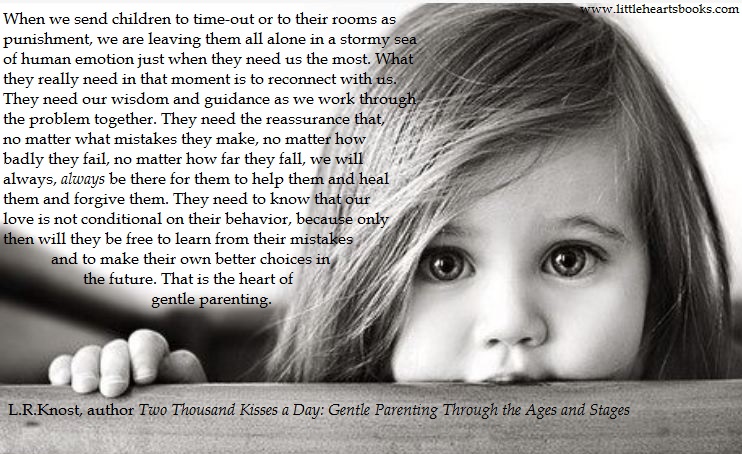 Even parents who use punishment-based parenting approaches other than physical punishment find that they must escalate and escalate to keep their children under ‘control.’ Behavior charts, time-outs, grounding, and removing privileges are some examples of non-physical punishment-based parenting. While these behavior modification techniques may be less painful to children physically, they still don’t address the underlying needs being communicated by the behavior and often are nearly as destructive to the parent/child relationship.
Even parents who use punishment-based parenting approaches other than physical punishment find that they must escalate and escalate to keep their children under ‘control.’ Behavior charts, time-outs, grounding, and removing privileges are some examples of non-physical punishment-based parenting. While these behavior modification techniques may be less painful to children physically, they still don’t address the underlying needs being communicated by the behavior and often are nearly as destructive to the parent/child relationship.
Using isolation such as time-outs or sending children to their room separates them from their source of guidance and comfort just when they need it the most and not only misses a golden opportunity to help the child learn coping mechanisms for dealing with their emotions, but also fractures the very connection that should provide the safety for expressing those emotions. Using behavior charts, removal of privileges, grounding, etc. separates children from their parents by creating an us-against-them mentality that inevitably leads to conflict instead of creating a teamwork mentality that leads to cooperation.
Here’s the thing, effective parenting and, more specifically, effective discipline, doesn’t require punishment. Equating discipline with punishment is an unfortunate, but common misconception. The root word in discipline is actually disciple which in the verb form means to guide, lead, teach, model, and encourage. In the noun form disciple means one who embraces the teaching of, follows the example of, and models their life after.
On the flip side, the root word in punishment is the Latin word punire which in verb form means to penalize, chastise, castigate, inflict harm, humiliate. There is no noun form of punire or its English equivalent, punishment.
Many of today’s most popular self-proclaimed parenting ‘experts’ equate physical punishment with discipline and go to great lengths to describe the best methods and tools for hitting children as well as instructing parents to maintain a calm, controlled, and even cheerful demeanor as they ‘lovingly’ hit their children.
It is interesting to note here that, when it comes to the law, crimes of passion are treated as less heinous than premeditated, planned, and purposefully executed crimes which are termed ‘in cold blood.’ And yet when physically punishing a child, a crime in many places across the globe, hitting in anger or frustration (i.e. passion) is deemed wrong by proponents of spanking, while hitting children with calm and deliberate intent (i.e. premeditation) is encouraged.
It is also interesting to note that, in the not-too-distant past, husbands hitting their wives was also viewed as not only a societal norm, but also a necessary part of maintaining a harmonious, successful marriage. In fact, a man who epitomizes the words calm and controlled, Sean Connery, shared his thoughts on the ’reasonable smacking’ of his wife in a 1987 interview with Barbara Walters in which he explained the necessity of using punitive methods to control women.
The core belief behind ‘reasonable smacking’ of wives was that there was no other effective way to control them. I agree. If controlling another human being is the goal, then force is necessary. Fear, intimidation, threats, power-plays, physical pain, those are the means of control.
But, if growing healthy humans is the goal, then building trust relationships, encouraging, guiding, leading, teaching, and communicating are the tools for success.
Many parents simply don’t know what else to do. They were raised with spanking and other punishment-based parenting methods as a means of control and “turned out okay” so they default to their own parents’ choices without researching alternatives to spanking or considering whether “okay” could be improved upon.
Consider this, more than 90% of American parents admit to spanking their children, and yet the common contention is that it’s a decline in spanking that is responsible for the purportedly escalating 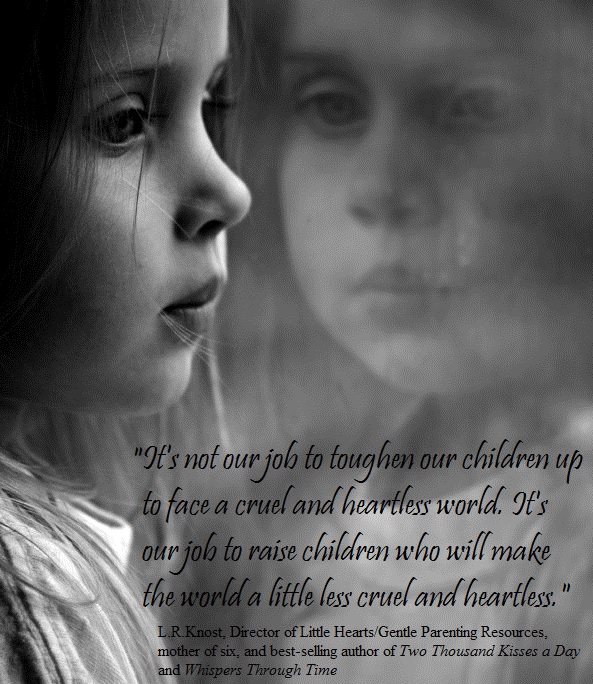 rates of youth violence and crime. Is it really the less than 10% of children who aren’t spanked who are responsible for all the problems of our society? Or could it be that the 90% of children who are subject to violence at home in the form of being slapped, paddled, smacked, yanked, whipped, popped, spanked, etc. are taking those lessons out into the world? Is it just possible that children who are hit learn to hit? That children who are hurt learn to hurt? Perhaps the lesson they are learning is that ‘might is right’ and violence is the answer to their problems, the outlet for their stress, the route to getting others to do what they want.
rates of youth violence and crime. Is it really the less than 10% of children who aren’t spanked who are responsible for all the problems of our society? Or could it be that the 90% of children who are subject to violence at home in the form of being slapped, paddled, smacked, yanked, whipped, popped, spanked, etc. are taking those lessons out into the world? Is it just possible that children who are hit learn to hit? That children who are hurt learn to hurt? Perhaps the lesson they are learning is that ‘might is right’ and violence is the answer to their problems, the outlet for their stress, the route to getting others to do what they want.
People throughout history have complained about ‘the trouble with kids today’ and they’ve pinned all the ills of their society on supposedly permissive parenting. They’ve ranted about out-of-control children, disrespectful youth, entitlement, spoiling, disobedience, violence, self-centeredness, etc:
“The children now love luxury. They have bad manners, contempt for authority, they show disrespect to their elders…. They no longer rise when elders enter the room. They contradict their parents, chatter before company, gobble up dainties at the table, cross their legs, and are tyrants over their teachers.” ~Socrates, 5th Century BC
“What is happening to our young people? They disrespect their elders, they disobey their parents. They ignore the law. They riot in the streets inflamed with wild notions. Their morals are decaying. What is to become of them?” ~Plato, 5th Century BC
“I see no hope for the future of our people if they are dependent on frivolous youth of today, for certainly all youth are reckless beyond words… When I was young, we were taught to be discreet and respectful of elders, but the present youth are exceedingly wise [disrespectful] and impatient of restraint” ~Hesiod, 8th Century BC
“The world is passing through troublous times. The young people of today think of nothing but themselves. They have no reverence for parents or old age. They are impatient of all restraint. They talk as if they knew everything, and what passes for wisdom with us is foolishness with them. As for the girls, they are forward, immodest and unladylike in speech, behavior and dress.” ~Peter the Hermit, 13th Century AD
Sounds familiar, doesn’t it? Maybe, though, there isn’t really any ‘trouble with kids today.’ Maybe the problem is with parents who repeat the patterns their own parents set or with societies who view normal stages of development as somehow abnormal.
Maybe ’kid’s today’ are just kids like they have been through the ages, full of exuberance and curiosity and learning their way in a great big world, and a listening ear, gentle guidance, and trusted arms to turn to when inevitable mistakes are made are really all children need to grow up into kind, helpful, responsible, productive members of our society.
The bottom line is that addressing our children’s underlying needs, the actual causes of their behavior instead of just the behavior itself, is a far more effective parental approach as well as being significantly better for a healthy, mutually respectful parent/child relationship. Sending our children out into the world as adults with their needs met, with coping mechanisms in place for those times when the stresses overwhelm them, and with the knowledge of a safe haven where comfort is always available when the world hurts them is a powerful way to change the world for the better.
Maybe, just maybe, sowing peace in our homes is the answer for our children, our families, and our world, after all.
*Also printed in The Natural Parent Magazine
Related posts:
Practical, Gentle, Effective Discipline
The Gift of a Strong-Willed Child
Backtalk is Communication…LISTEN
Bridge Over Troubled Waters~Parenting a ‘Problem’ Child
200 Ways to Bless Your Children with a Happy Childhood
12 Tips for Gently Parenting Your Adult Children (Hint: It starts when they’re newborns!)
The Measure of Success~Chinese Parents and French Parents Can’t BOTH Be Superior!
 Award-winnning author, L.R.Knost, is the founder and director of the children's rights advocacy and family consulting group, Little Hearts/Gentle Parenting Resources, and Editor-in-Chief of Holistic Parenting Magazine. Books by L.R.Knost include Whispers Through Time: Communication Through the Ages and Stages of Childhood ; Two Thousand Kisses a Day: Gentle Parenting Through the Ages and Stages ; The Gentle Parent: Positive, Practical, Effective Discipline ; and Jesus, the Gentle Parent: Gentle Christian Parenting the first four books in the Little Hearts Handbook gentle parenting series, and children’s picture books Petey’s Listening Ears and the soon-to-be-released Grumpykins series.
Award-winnning author, L.R.Knost, is the founder and director of the children's rights advocacy and family consulting group, Little Hearts/Gentle Parenting Resources, and Editor-in-Chief of Holistic Parenting Magazine. Books by L.R.Knost include Whispers Through Time: Communication Through the Ages and Stages of Childhood ; Two Thousand Kisses a Day: Gentle Parenting Through the Ages and Stages ; The Gentle Parent: Positive, Practical, Effective Discipline ; and Jesus, the Gentle Parent: Gentle Christian Parenting the first four books in the Little Hearts Handbook gentle parenting series, and children’s picture books Petey’s Listening Ears and the soon-to-be-released Grumpykins series.
Little Hearts Handbooks: Vote for Your Favorite Author Picture to Enter to Win a Pre-Release Copy!
![]() [Two Thousand Kisses a Day: Gentle Parenting Through the Ages and Stages by L.R.Knost now available. #14 on Amazon’s Top 100 New Releases in parenting!]
[Two Thousand Kisses a Day: Gentle Parenting Through the Ages and Stages by L.R.Knost now available. #14 on Amazon’s Top 100 New Releases in parenting!]
A winner has been chosen! For more opportunities to win a Little Hearts Handbook, follow Little Hearts/Gentle Parenting Resources by subscribing to receive updates from this website, on Face Book, Pinterest, and Twitter. Thank you to all who participated!
Exciting times ahead for Little Hearts! In the New Year, a series of handbooks based on the Little Hearts/Gentle Parenting Resources website will be released in paperback and for Kindle. The books will be approximately 120 pages and priced around $7.99 for paperback and $3.99 to $4.99 for Kindle. More details to come!
In celebration, we’re giving away a free, pre-release copy of the first handbook in the series, Two Thousand Kisses a Day~Gentle Parenting Through the Ages & Stages. Our official Little Hearts photographer from Melissa Lynsay Photography has outdone herself, and now we can’t decide on the best author picture for the back cover of the books.
We need your help deciding on a picture, so vote for your favorite author picture or comment on this post to register to win!
For voting purposes, we’ll call the picture above pic 1 and here is pic 2:
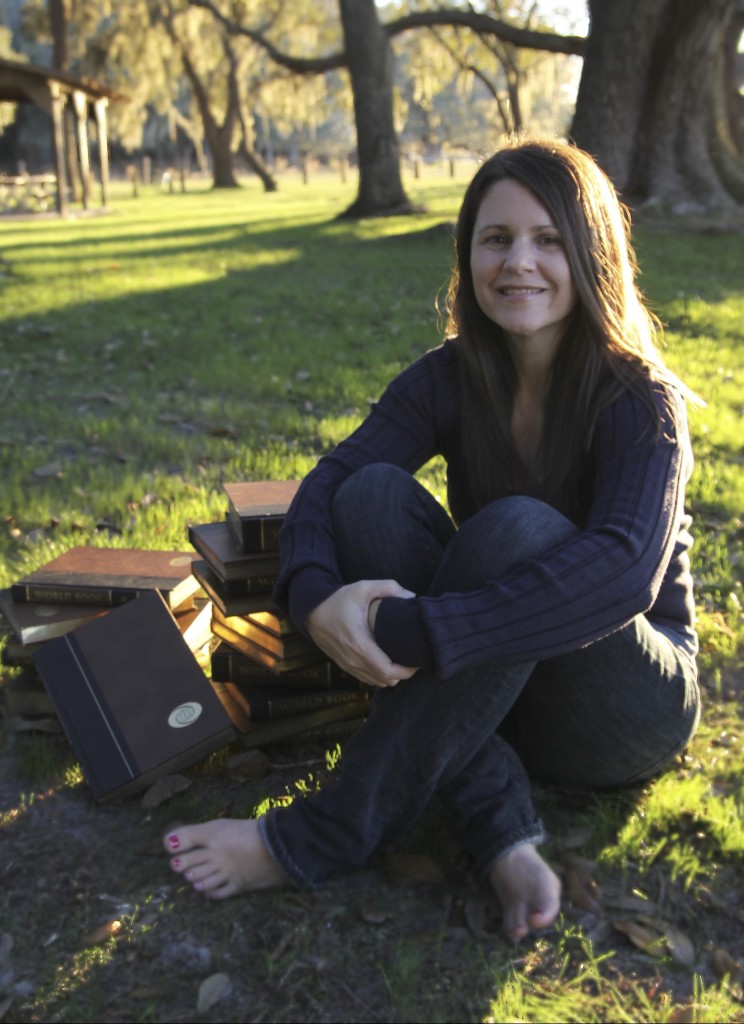
and pic 3:

Here are previews of the working copies of three of the book covers so you can see the pictures in ‘thumbnail’ form as they’ll be on the back cover. The actual handbooks are 6″ x 9″ so almost twice the size of these cover images which will make the pictures nearly double the size you see here:
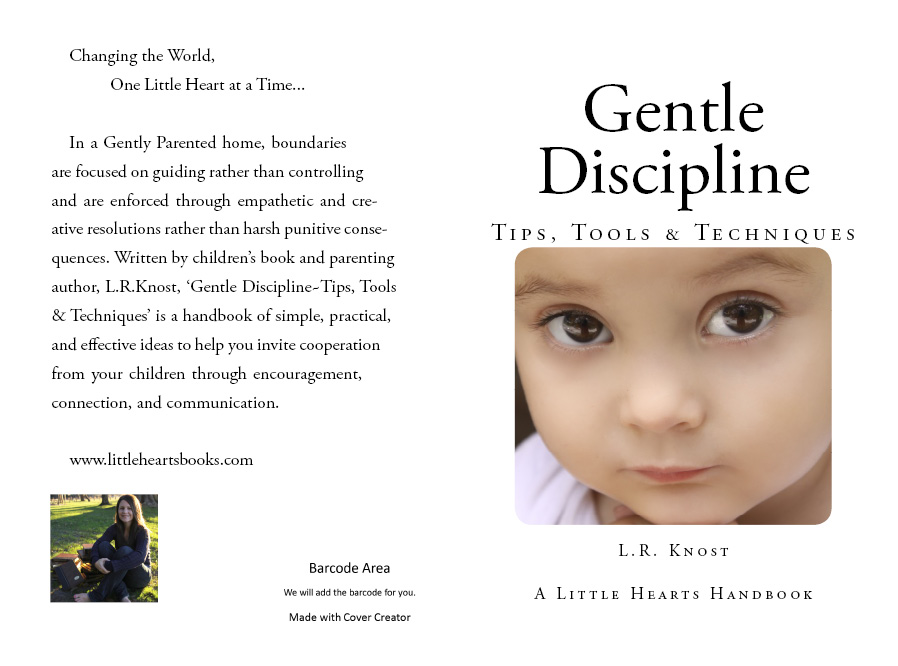
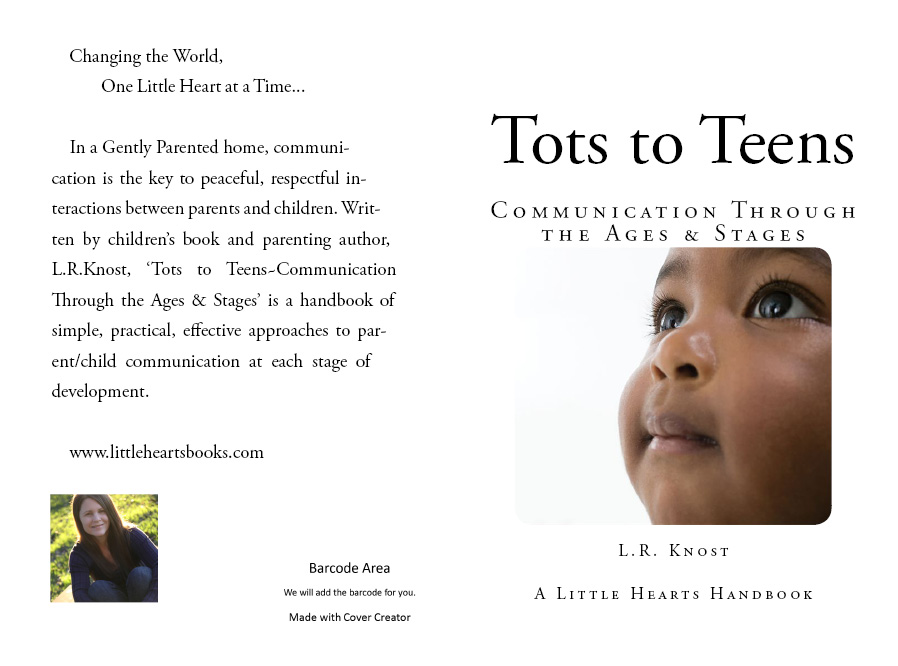
Okay, there you go! Vote for your favorite picture or leave a comment to register to win a free copy. It’s that easy!
 Award-winnning author, L.R.Knost, is the founder and director of the children's rights advocacy and family consulting group, Little Hearts/Gentle Parenting Resources, and Editor-in-Chief of Holistic Parenting Magazine. Books by L.R.Knost include Whispers Through Time: Communication Through the Ages and Stages of Childhood ; Two Thousand Kisses a Day: Gentle Parenting Through the Ages and Stages ; The Gentle Parent: Positive, Practical, Effective Discipline ; and Jesus, the Gentle Parent: Gentle Christian Parenting the first four books in the Little Hearts Handbook gentle parenting series, and children’s picture books Petey’s Listening Ears and the soon-to-be-released Grumpykins series.
Award-winnning author, L.R.Knost, is the founder and director of the children's rights advocacy and family consulting group, Little Hearts/Gentle Parenting Resources, and Editor-in-Chief of Holistic Parenting Magazine. Books by L.R.Knost include Whispers Through Time: Communication Through the Ages and Stages of Childhood ; Two Thousand Kisses a Day: Gentle Parenting Through the Ages and Stages ; The Gentle Parent: Positive, Practical, Effective Discipline ; and Jesus, the Gentle Parent: Gentle Christian Parenting the first four books in the Little Hearts Handbook gentle parenting series, and children’s picture books Petey’s Listening Ears and the soon-to-be-released Grumpykins series.

 From kicking and rolling and stretching to being lulled to sleep by the rhythmic cadence of a mama’s heartbeat, little ones spend the first months of their existence wrapped in a warm, dark, gently swaying cocoon, a life-giving embrace, the ultimate hug, readying themselves for their grand entrance to the world.
From kicking and rolling and stretching to being lulled to sleep by the rhythmic cadence of a mama’s heartbeat, little ones spend the first months of their existence wrapped in a warm, dark, gently swaying cocoon, a life-giving embrace, the ultimate hug, readying themselves for their grand entrance to the world.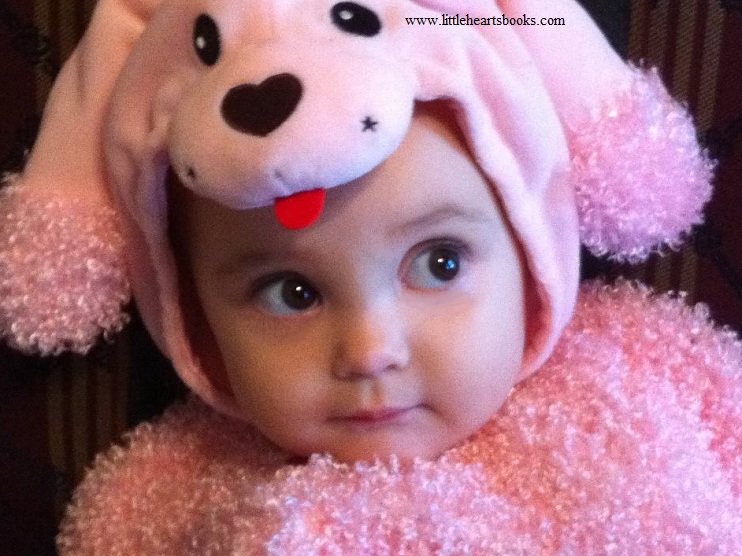 Capri points at the front door every morning and says, “Daddy, go!” Her daddy feels a bit rejected, especially on the weekends when he doesn’t have to go to work and his little girl cries because he won’t leave!
Capri points at the front door every morning and says, “Daddy, go!” Her daddy feels a bit rejected, especially on the weekends when he doesn’t have to go to work and his little girl cries because he won’t leave! 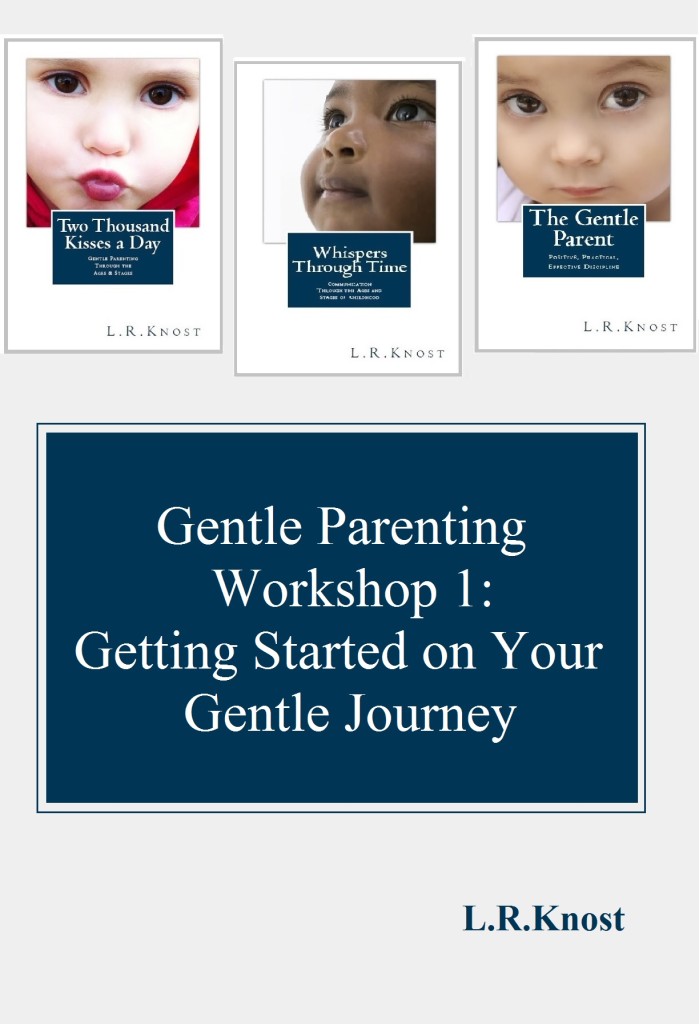
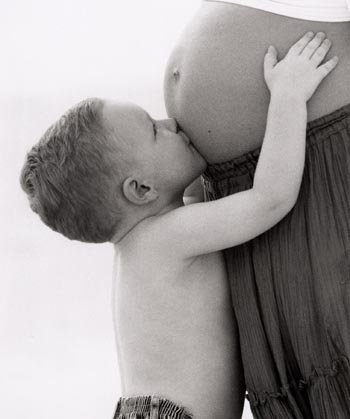 Pregnancy is a time of introspection, excitement, and, often, anxiety for most new mamas. When those new mamas also have other small children at home, that anxiety can become overwhelming as they worry about how they’ll cope with more than one child and how the current little loves of their life will cope with a new sibling. While these are very valid concerns, there are steps you can take to prepare your child for a new sibling and help them to adjust when the new baby arrives that will also help you to cope with life as a mama of more than one little blessing.
Pregnancy is a time of introspection, excitement, and, often, anxiety for most new mamas. When those new mamas also have other small children at home, that anxiety can become overwhelming as they worry about how they’ll cope with more than one child and how the current little loves of their life will cope with a new sibling. While these are very valid concerns, there are steps you can take to prepare your child for a new sibling and help them to adjust when the new baby arrives that will also help you to cope with life as a mama of more than one little blessing. Related posts:
Related posts: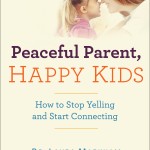
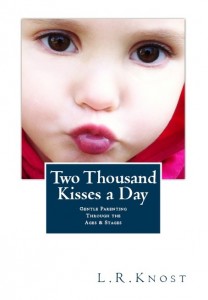
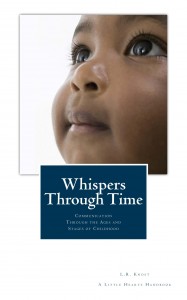

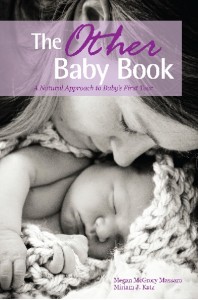
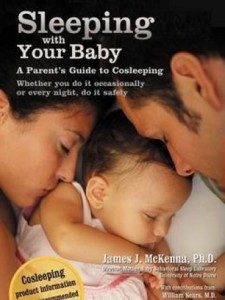
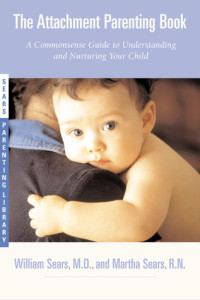
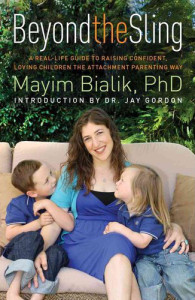
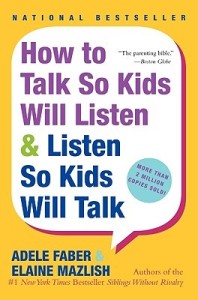
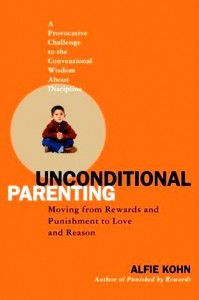
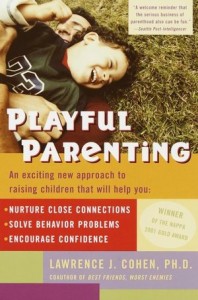
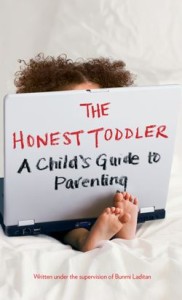
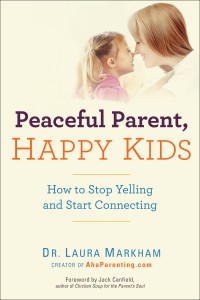
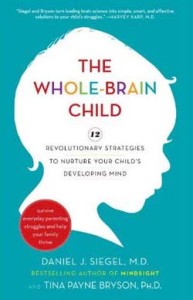
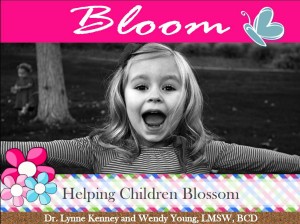
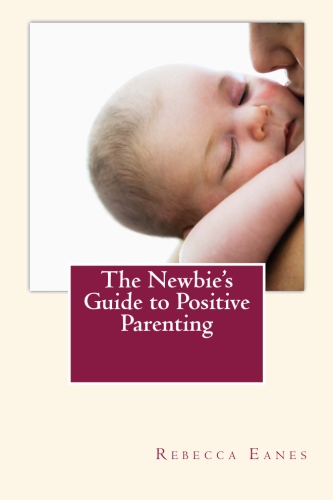
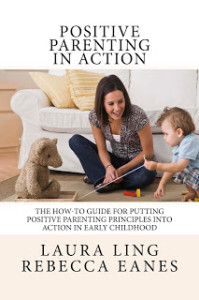
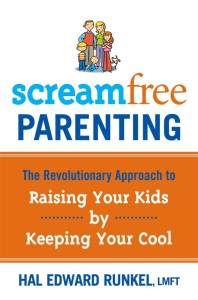
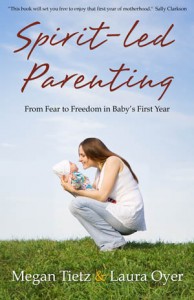


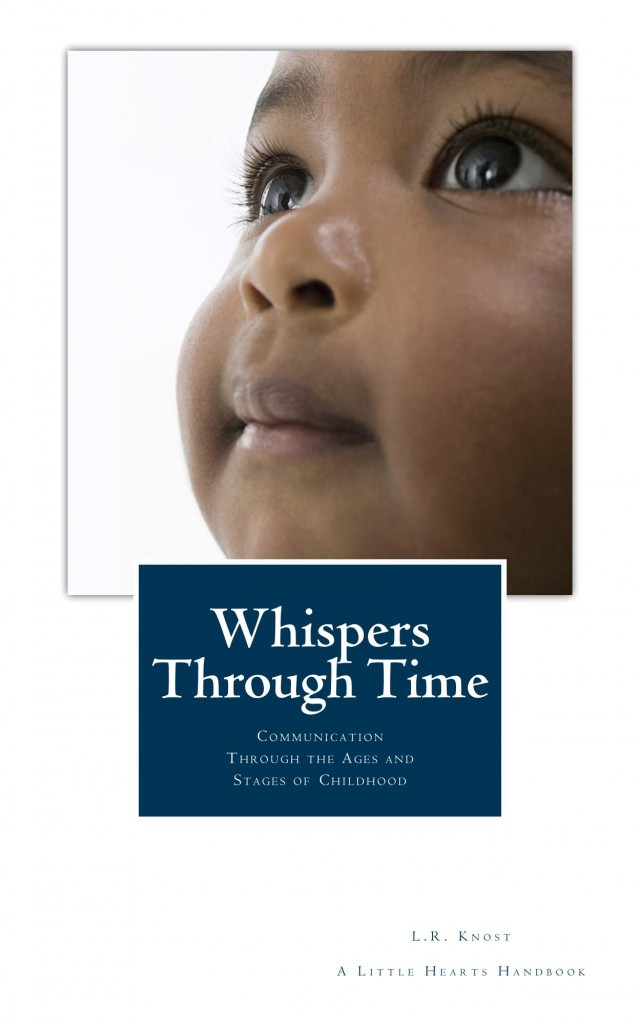
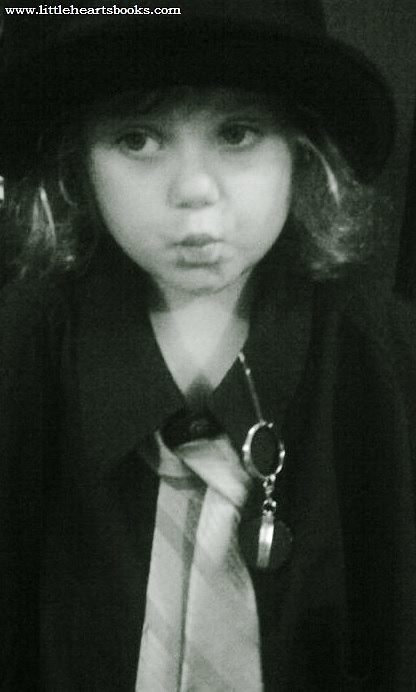 [Reprinted from
[Reprinted from 

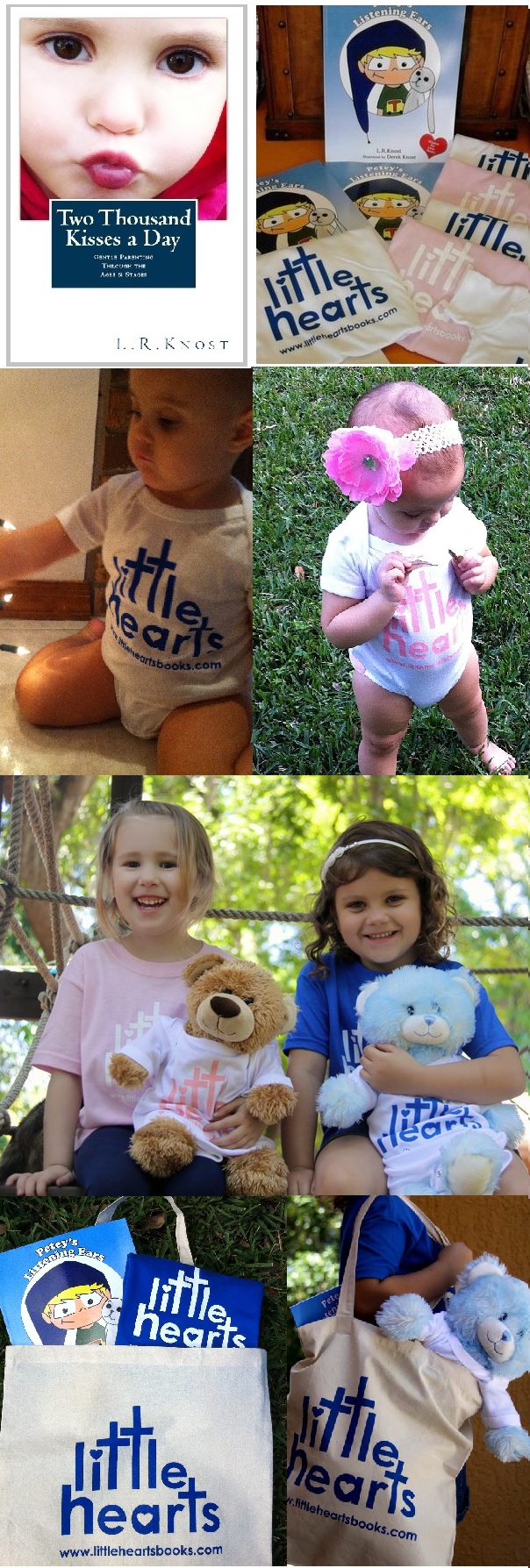
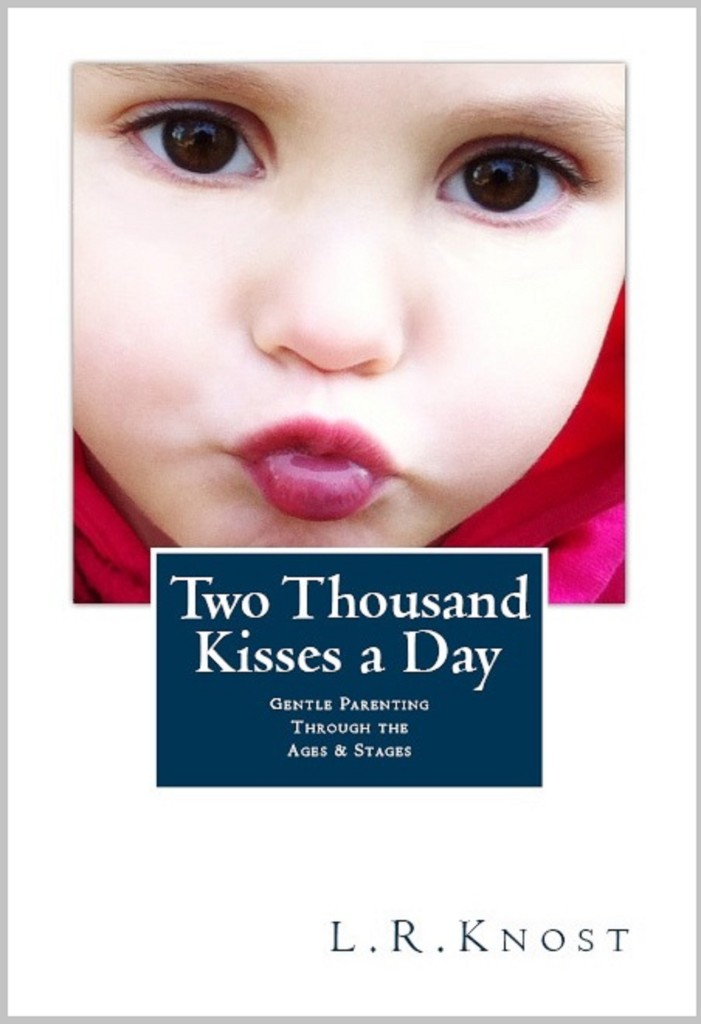
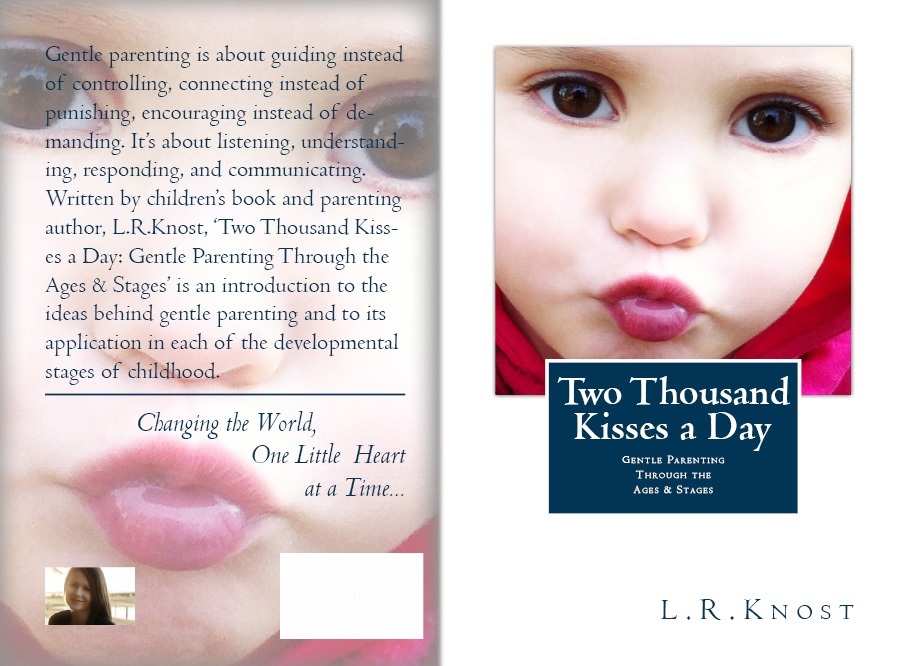
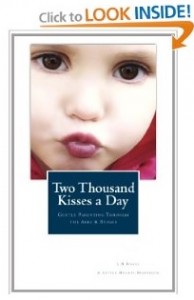
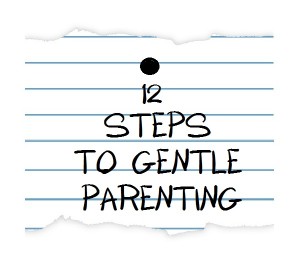 It’s been said that it takes twenty-one days to make or break a habit and that change comes easiest and lasts longest when it’s undertaken in small, bite-sized chunks. Those same principles apply when trying to transform your parenting, as well. Simply resolving on January 1st that, from that day forward, you are going to be a gentle parent and trying to change everything all at once is just setting yourself up for disappointment, frustration, and, more than likely, failure followed by that age-old enemy of peace…mommy guilt.
It’s been said that it takes twenty-one days to make or break a habit and that change comes easiest and lasts longest when it’s undertaken in small, bite-sized chunks. Those same principles apply when trying to transform your parenting, as well. Simply resolving on January 1st that, from that day forward, you are going to be a gentle parent and trying to change everything all at once is just setting yourself up for disappointment, frustration, and, more than likely, failure followed by that age-old enemy of peace…mommy guilt.